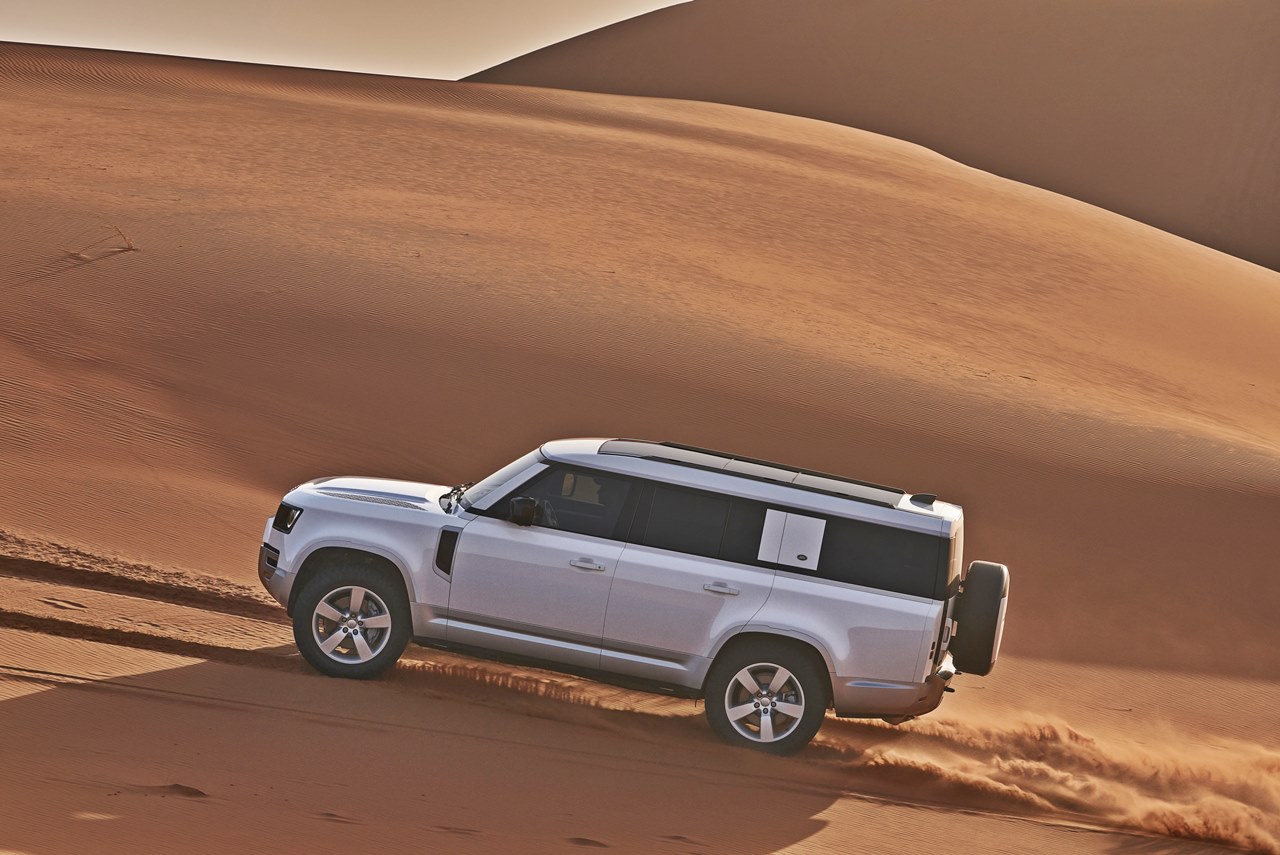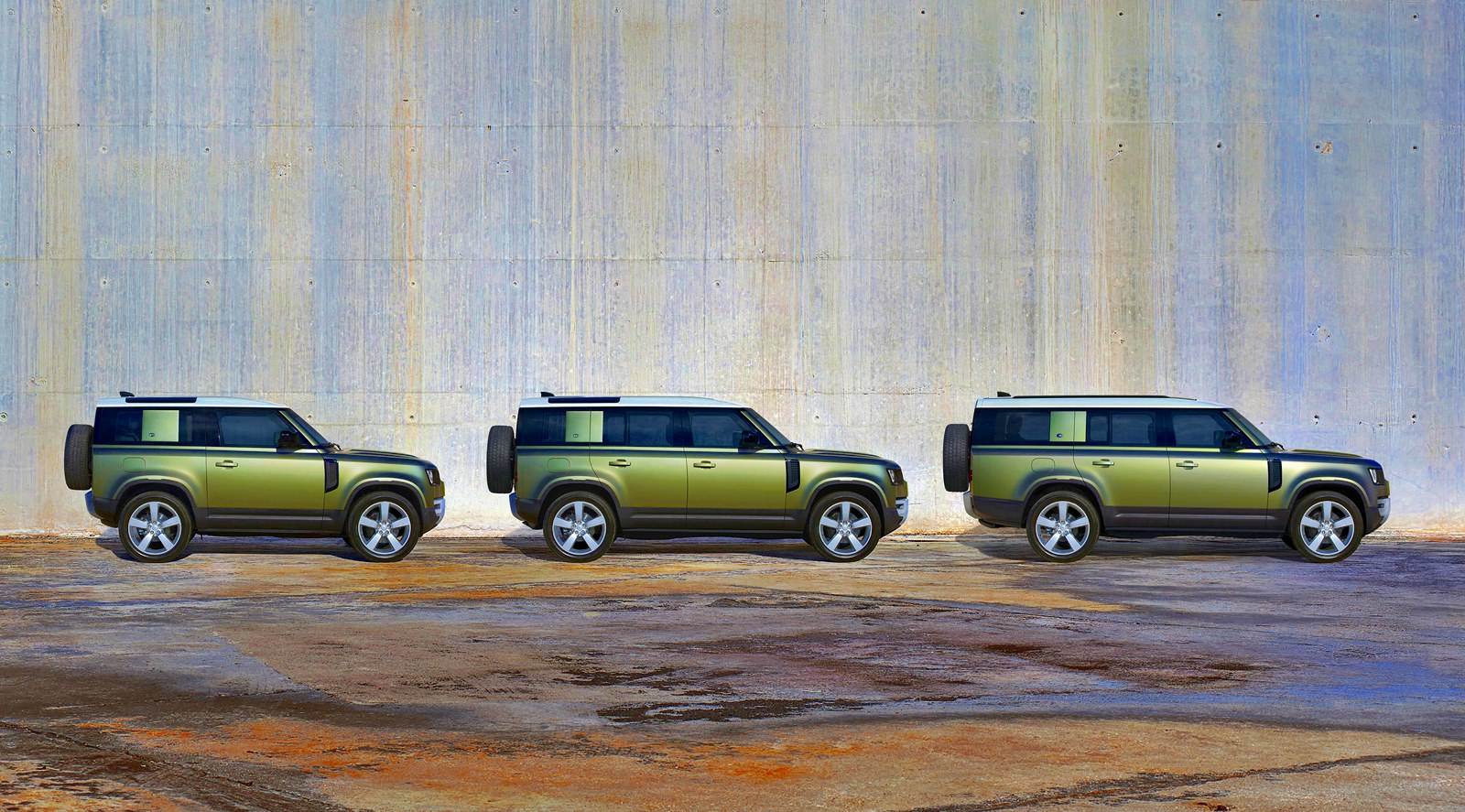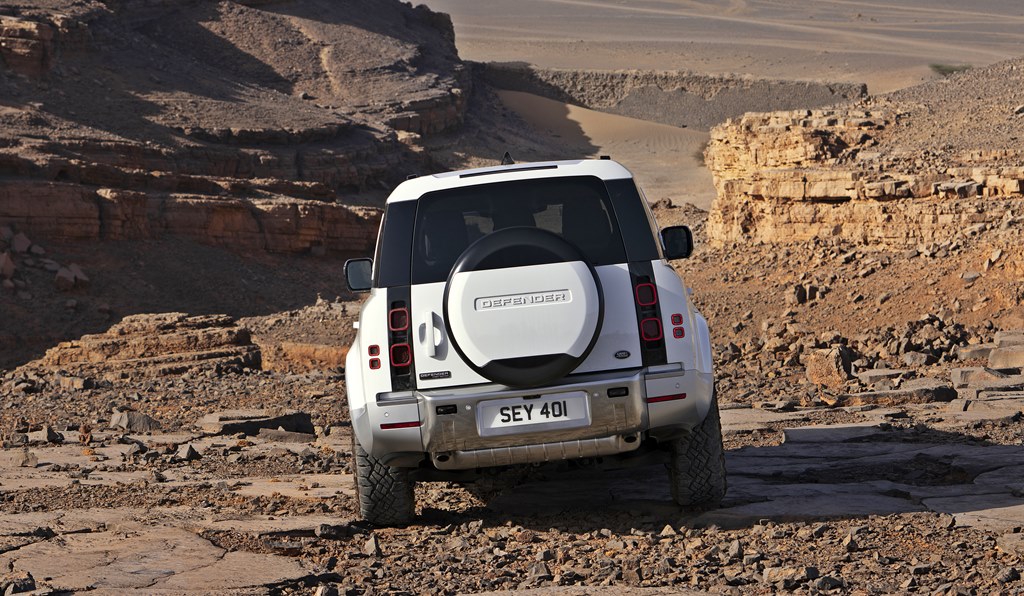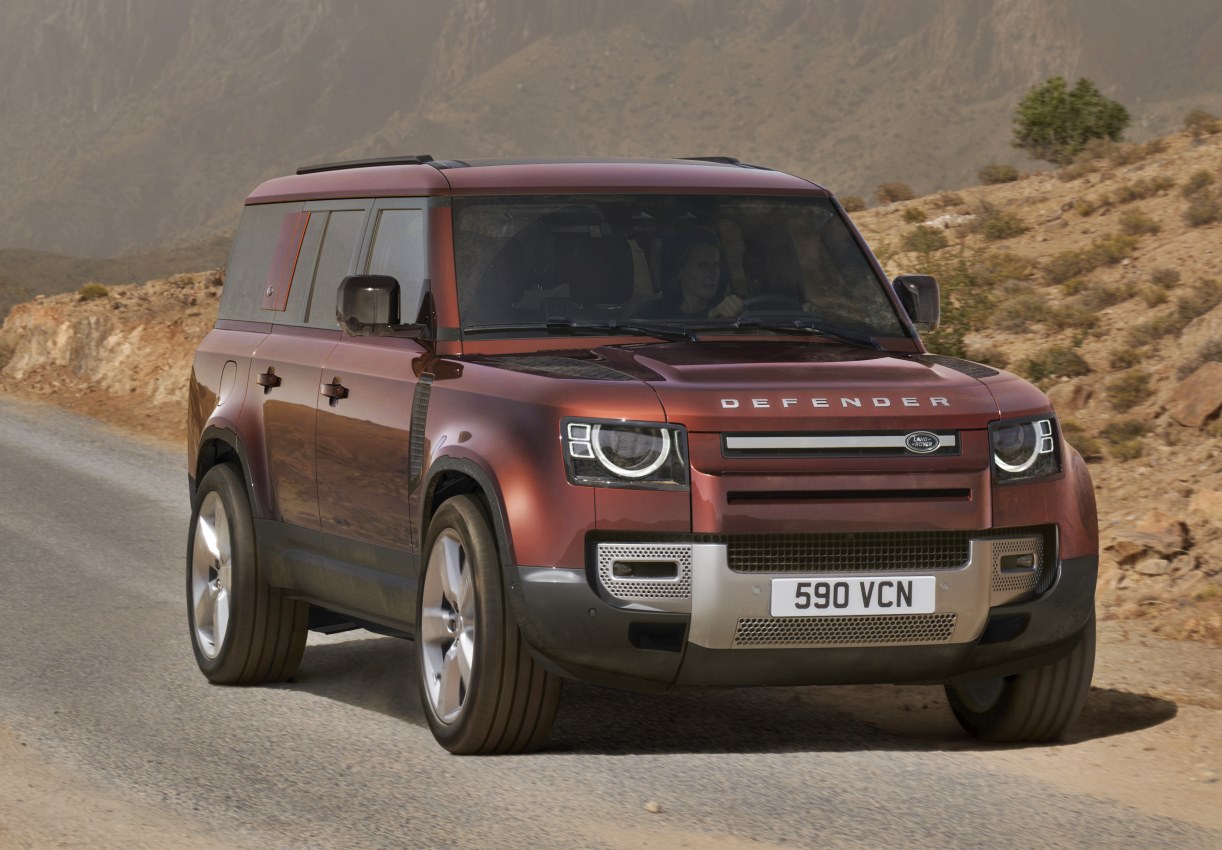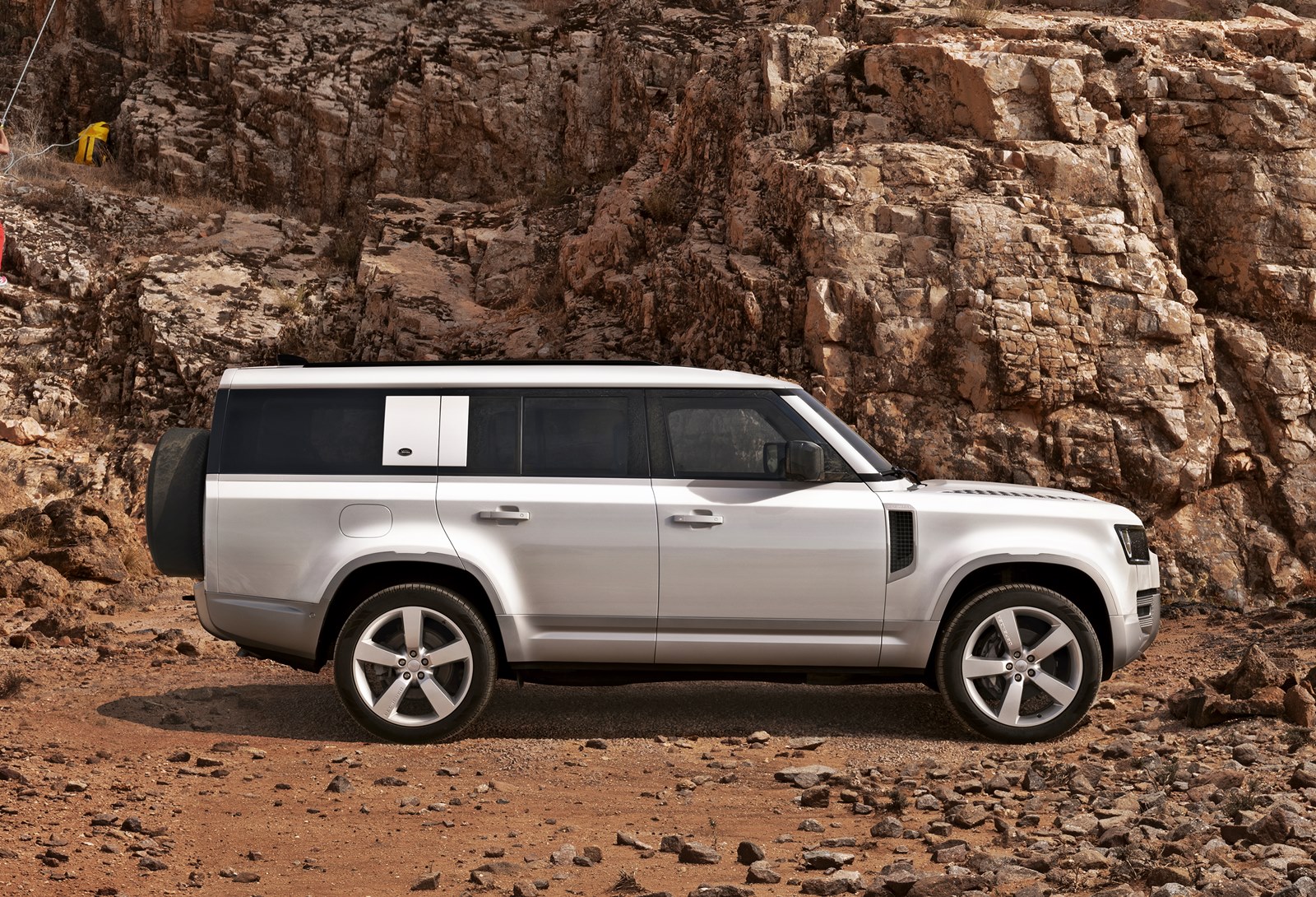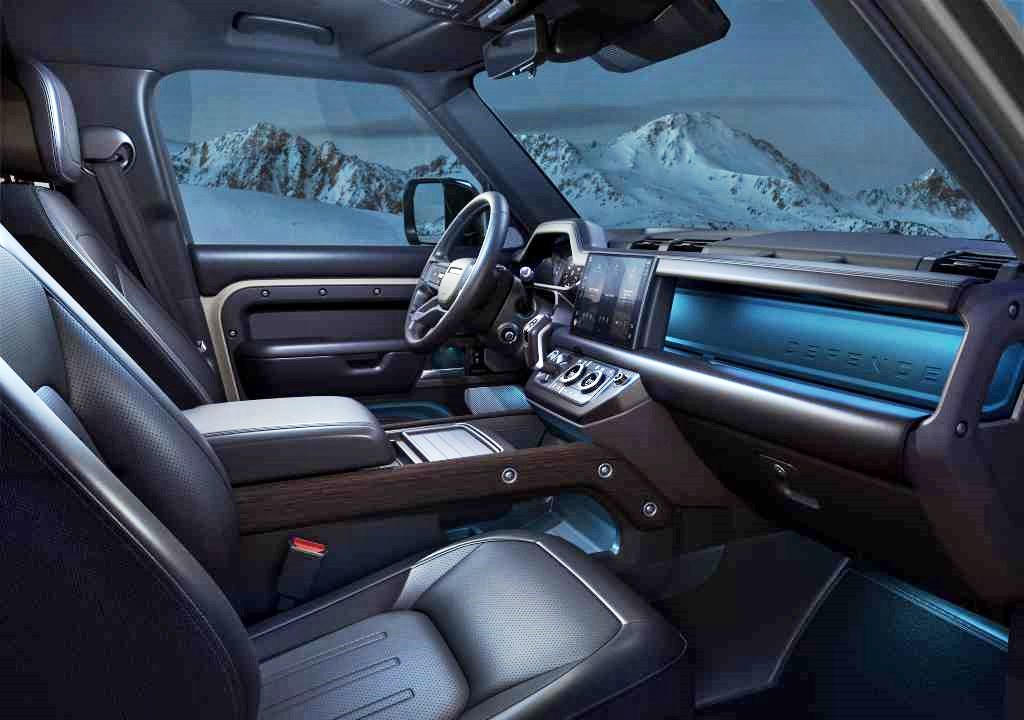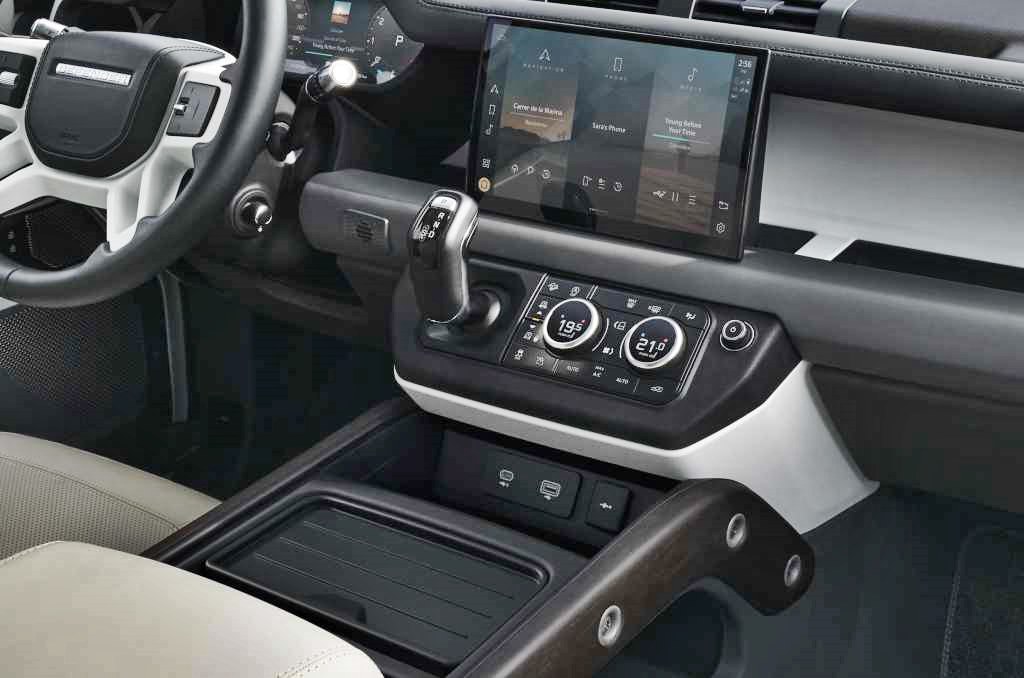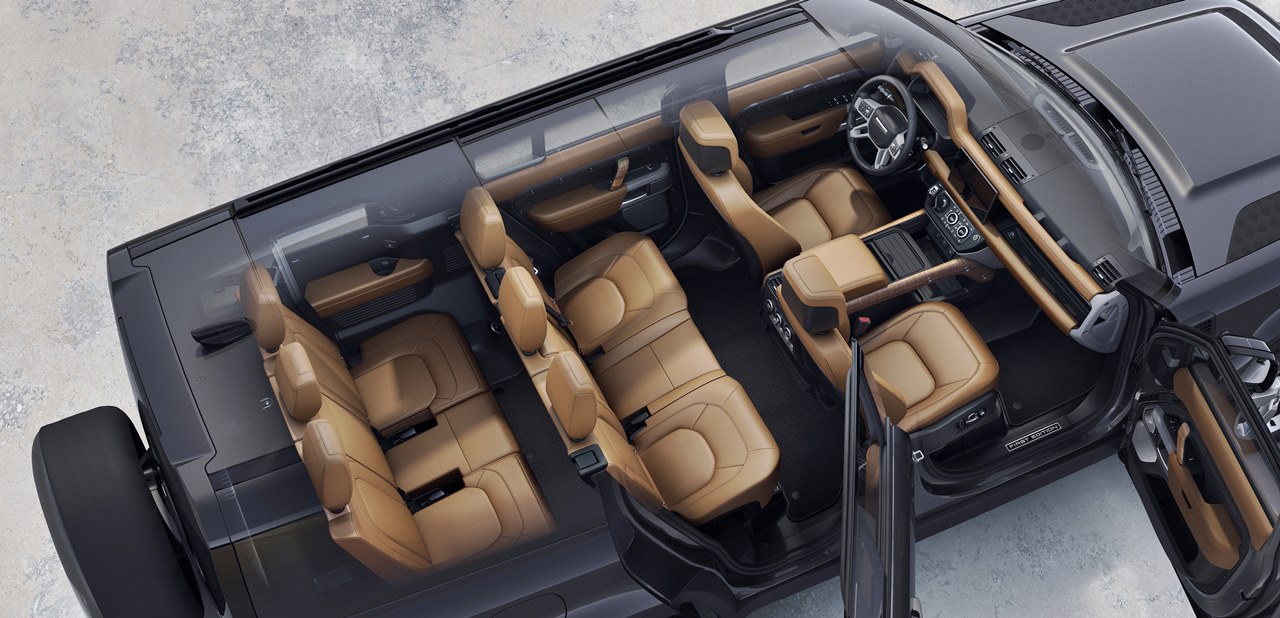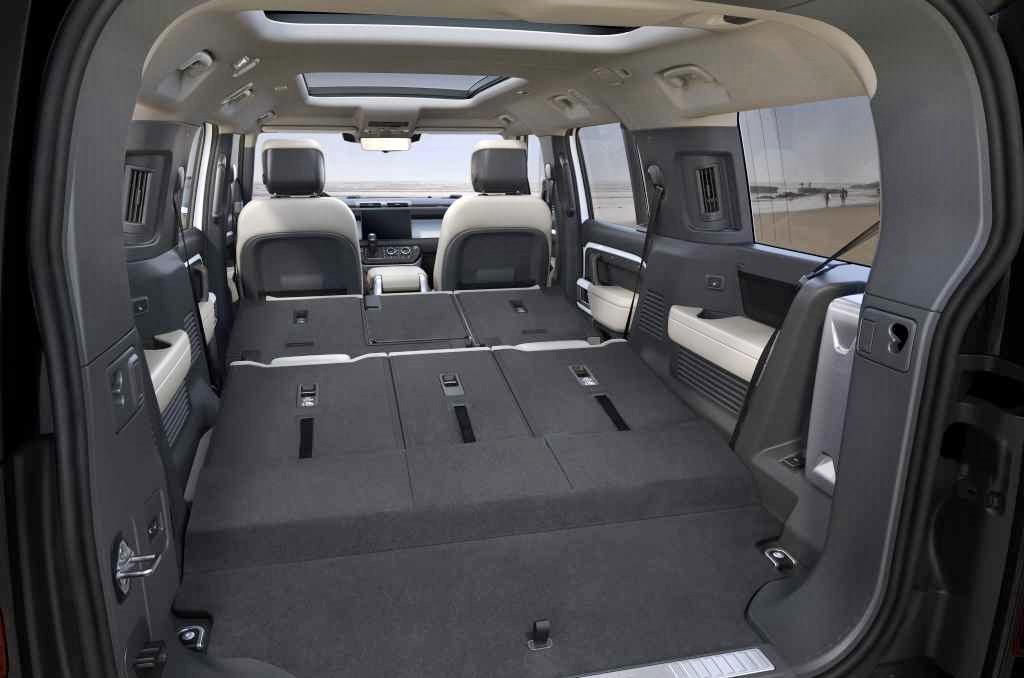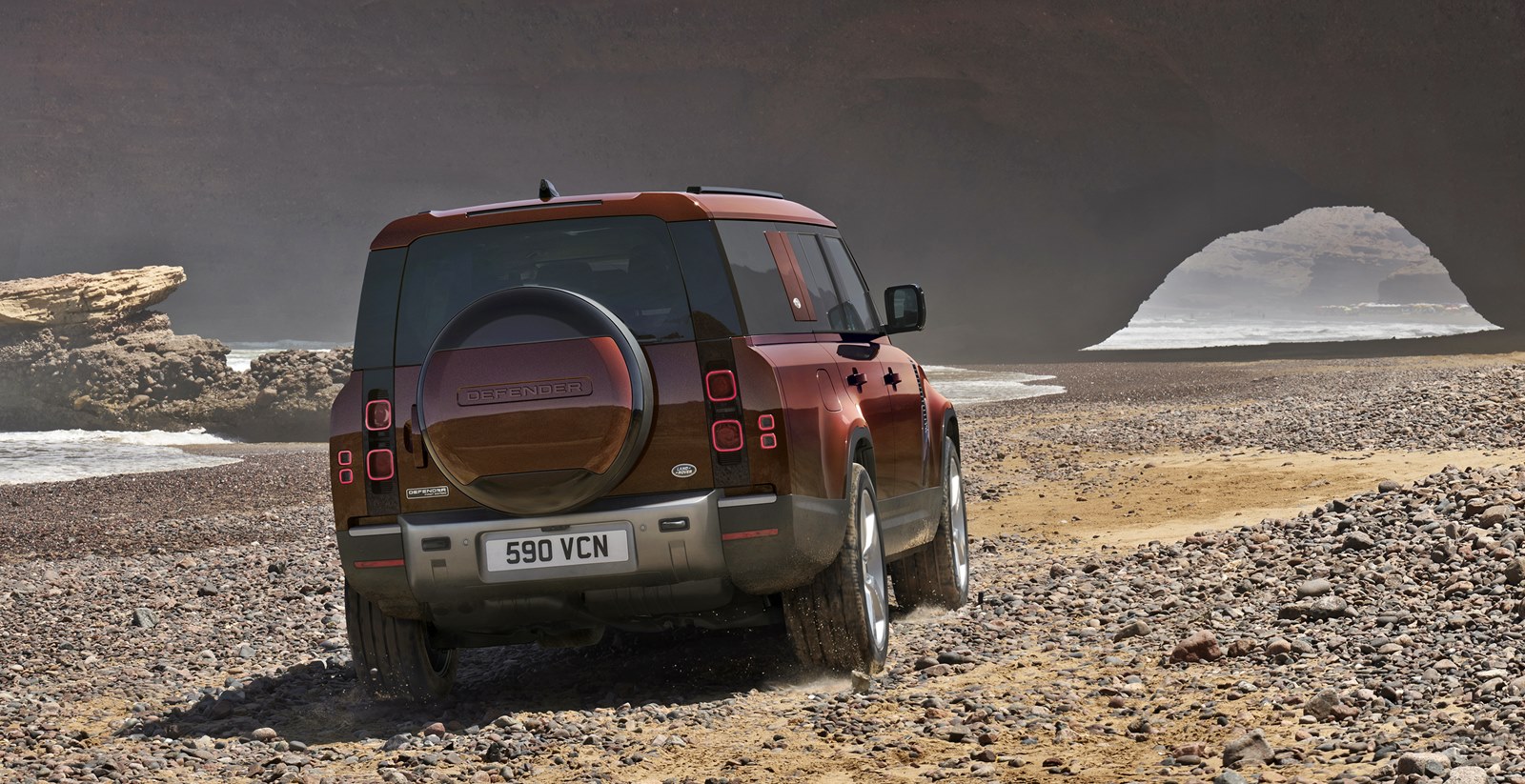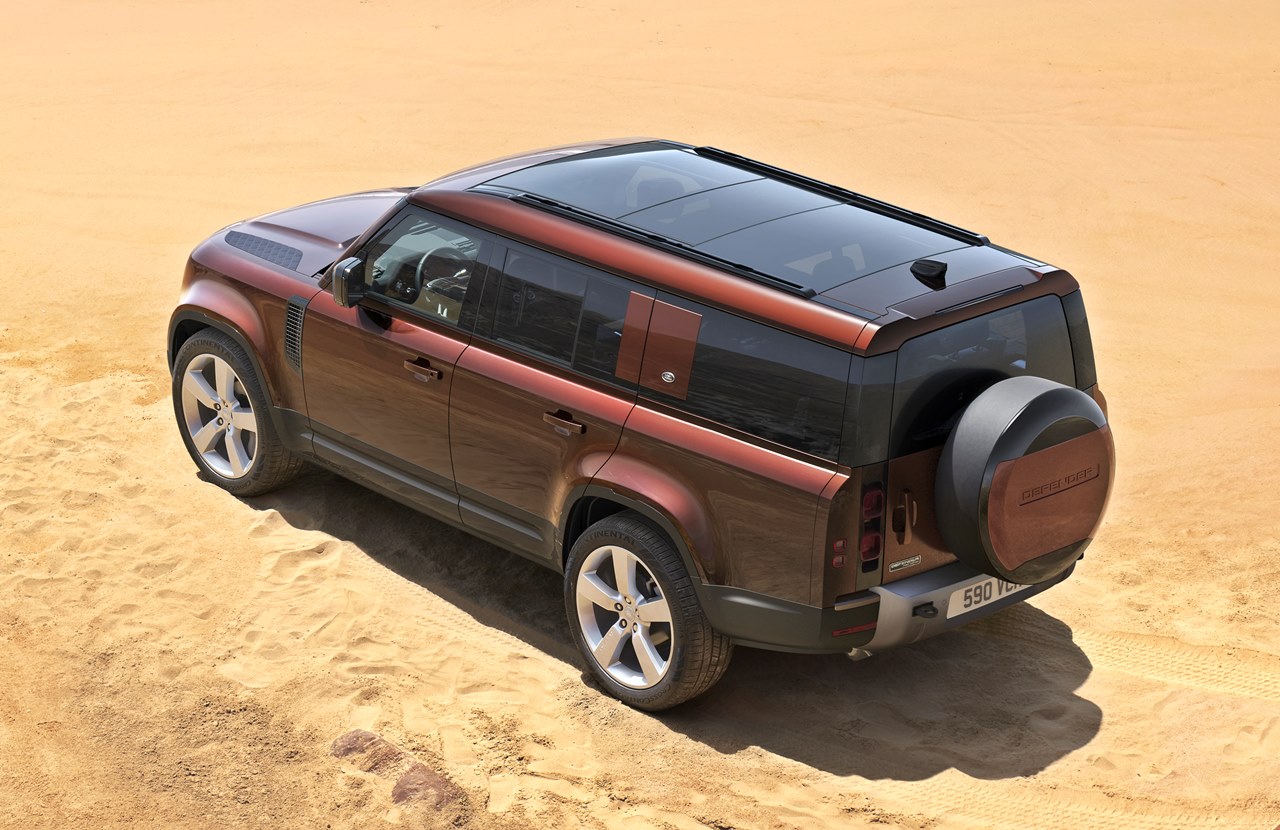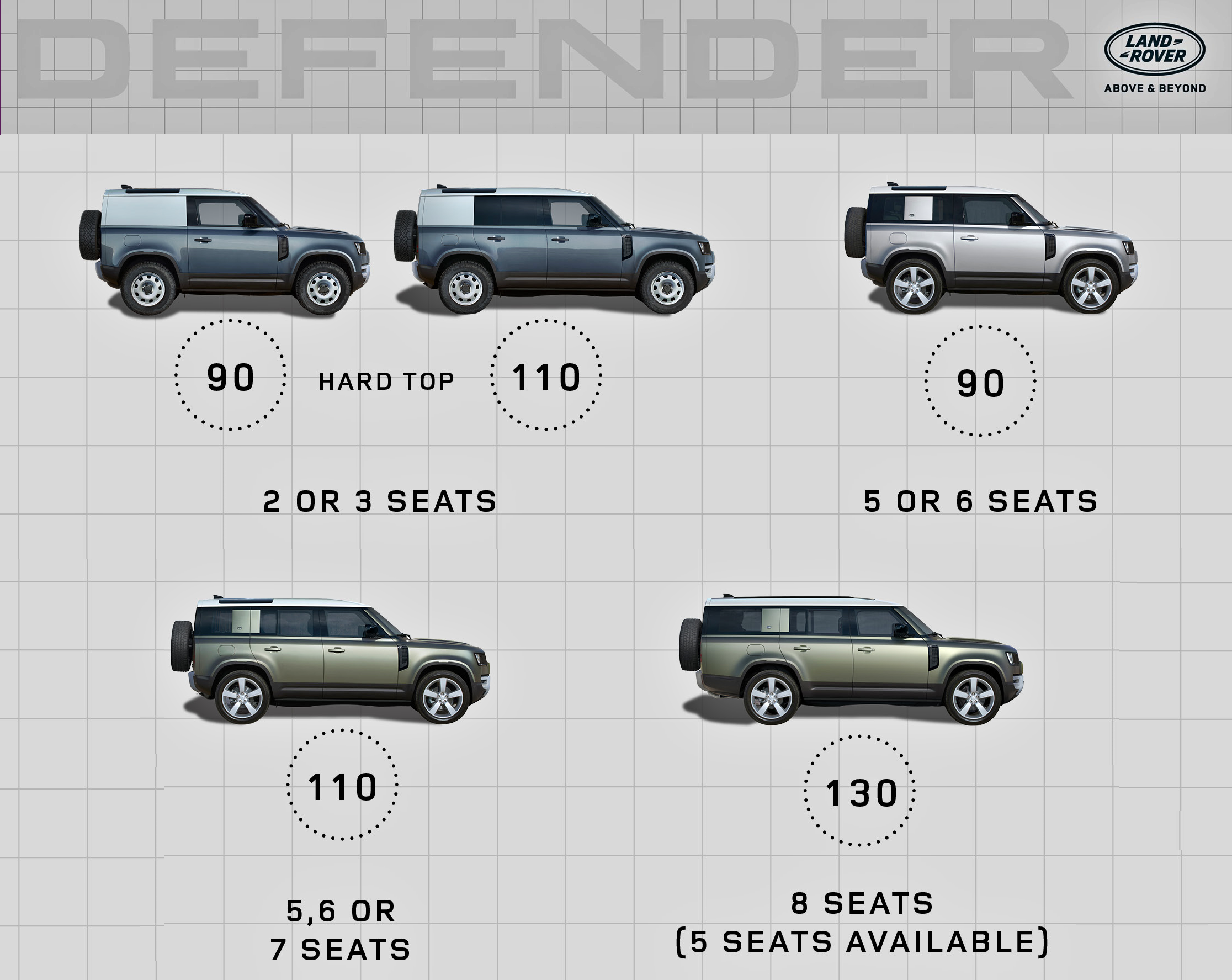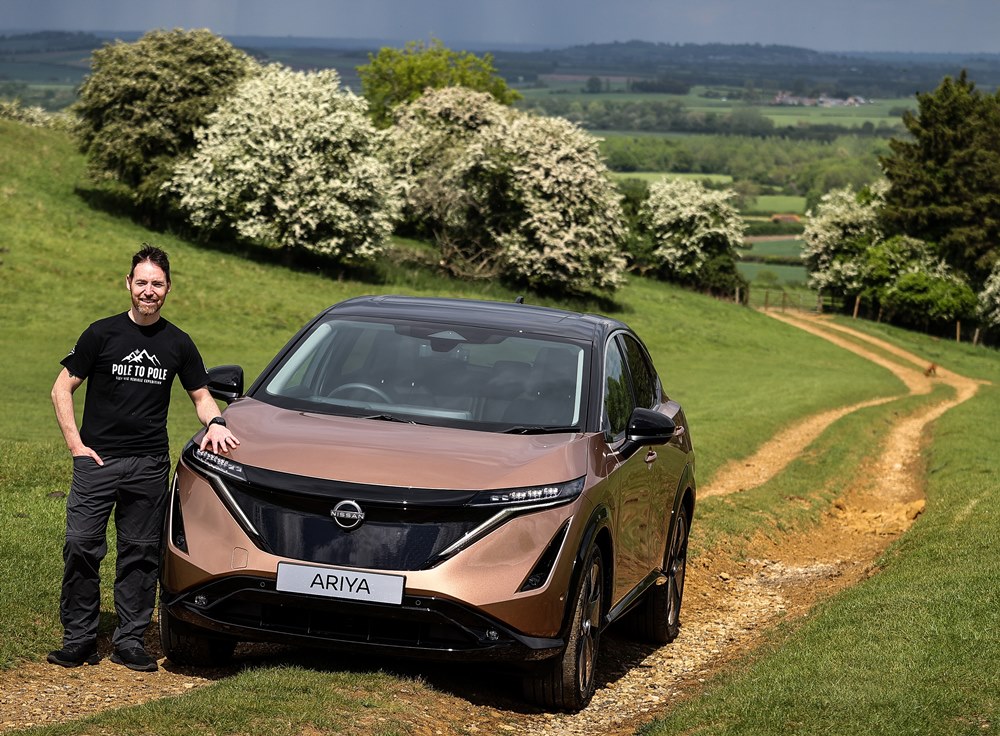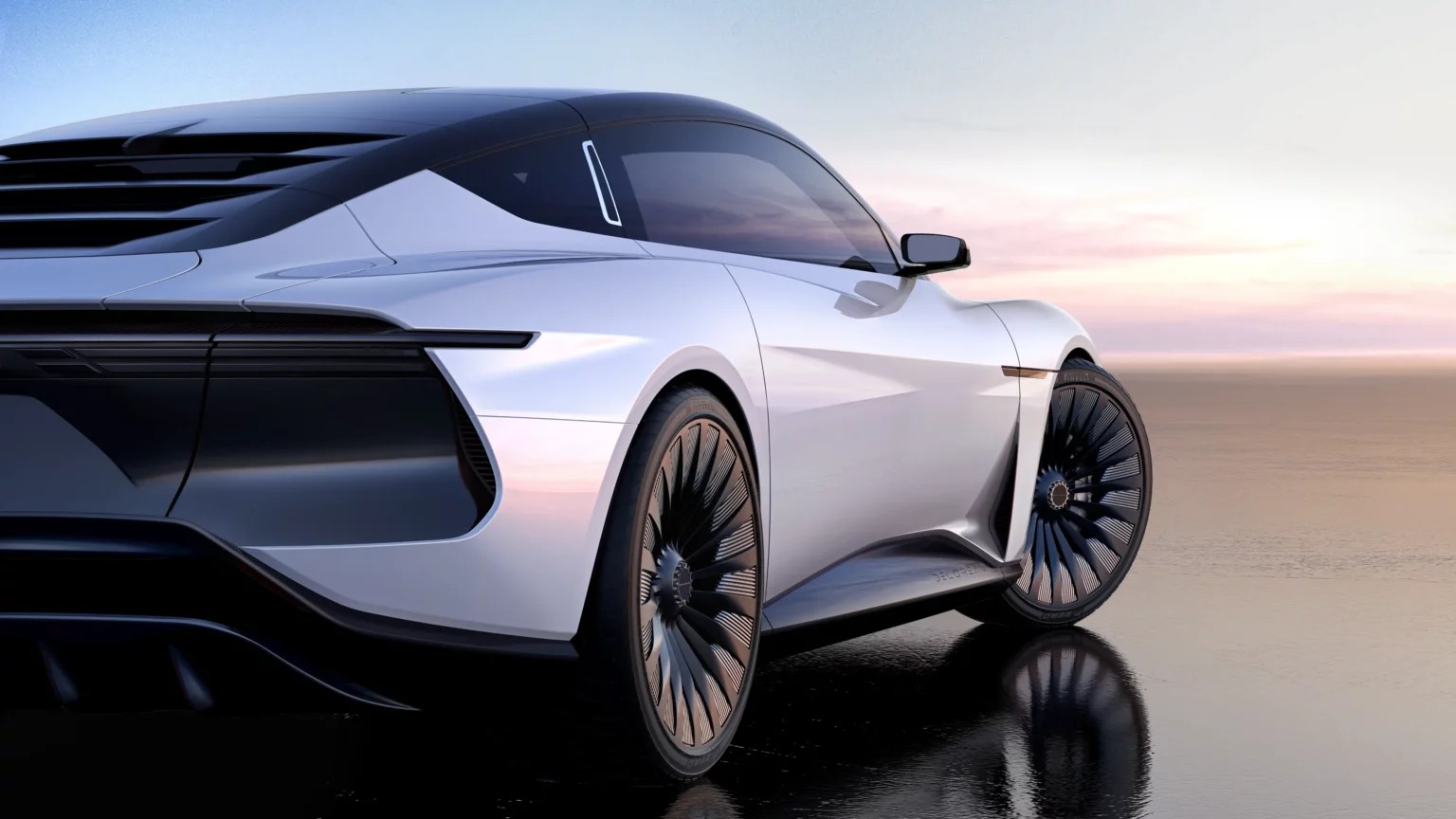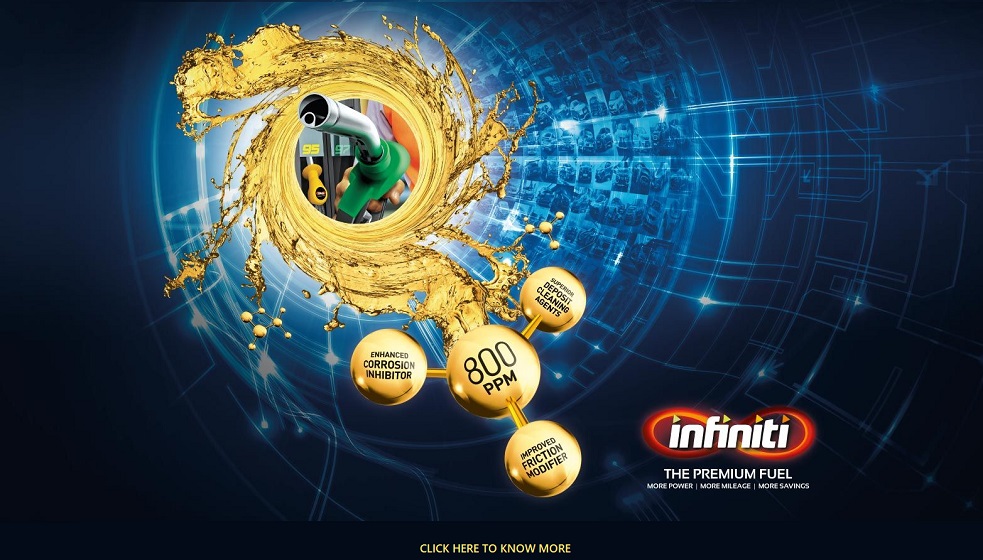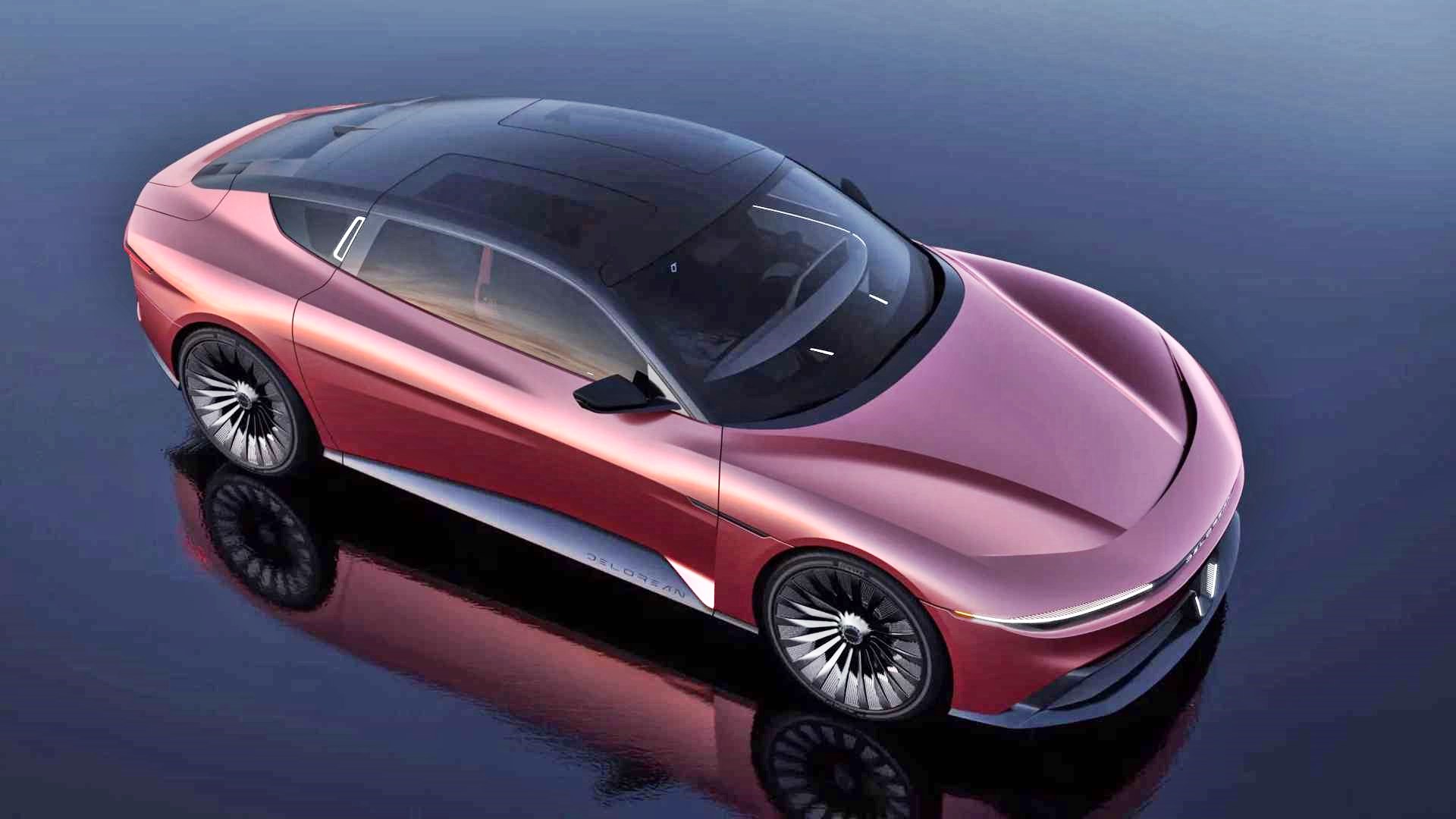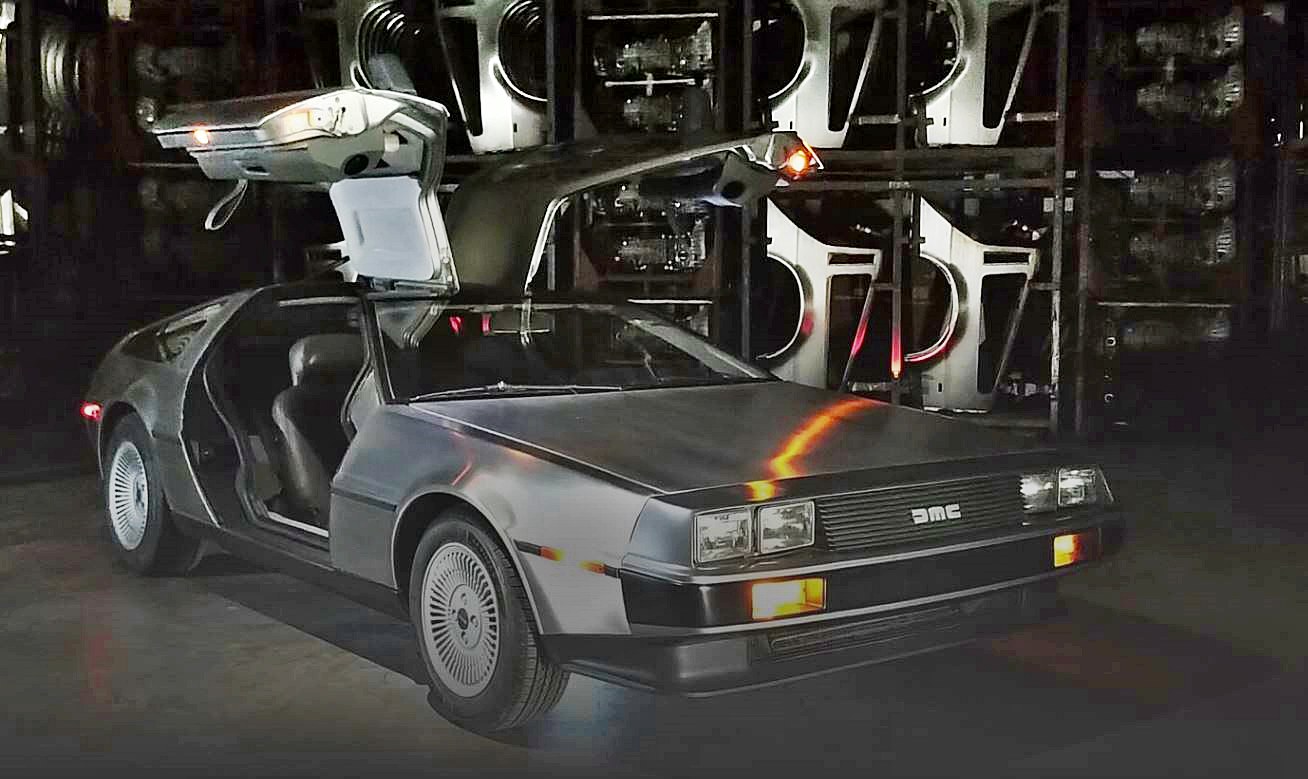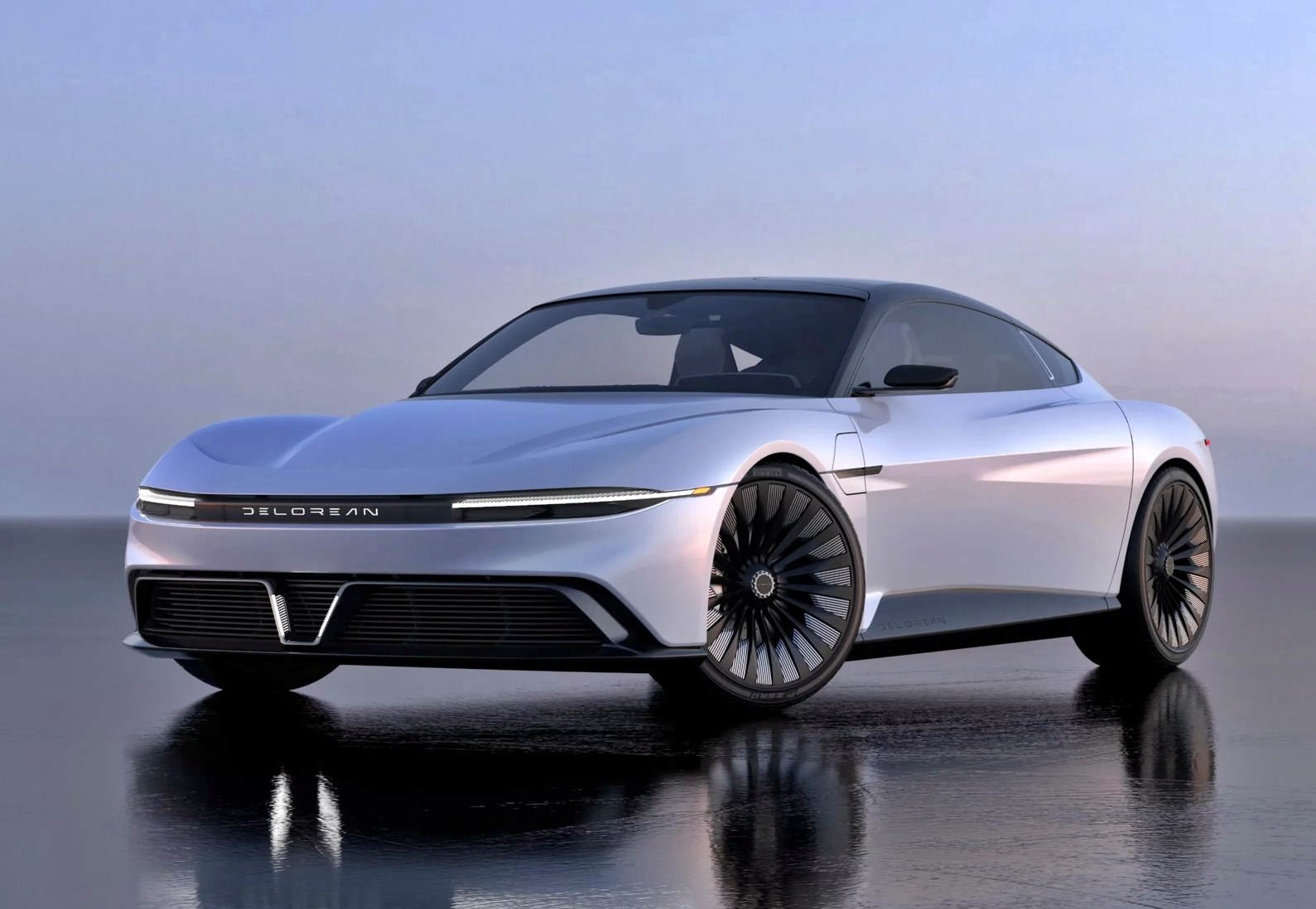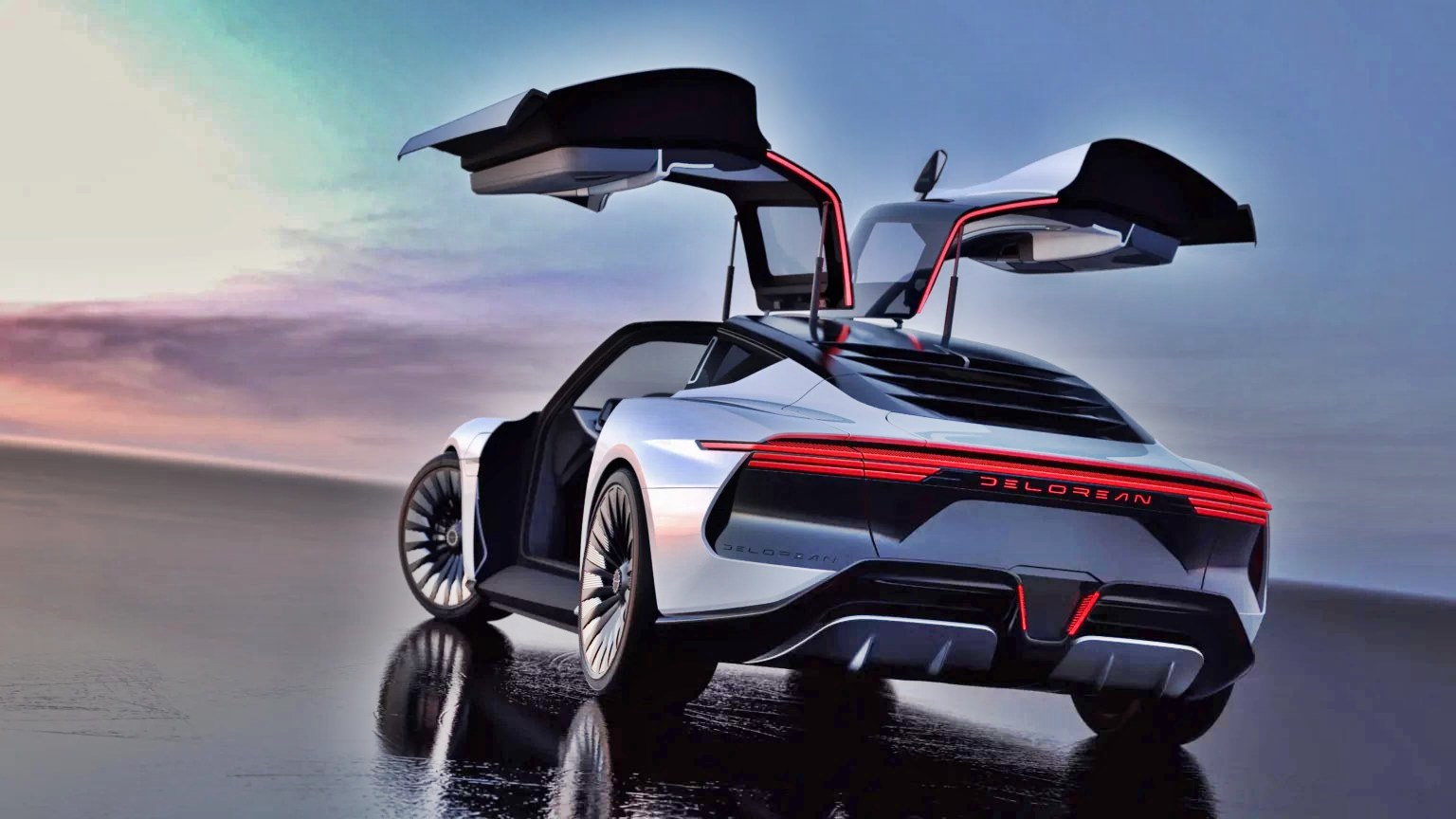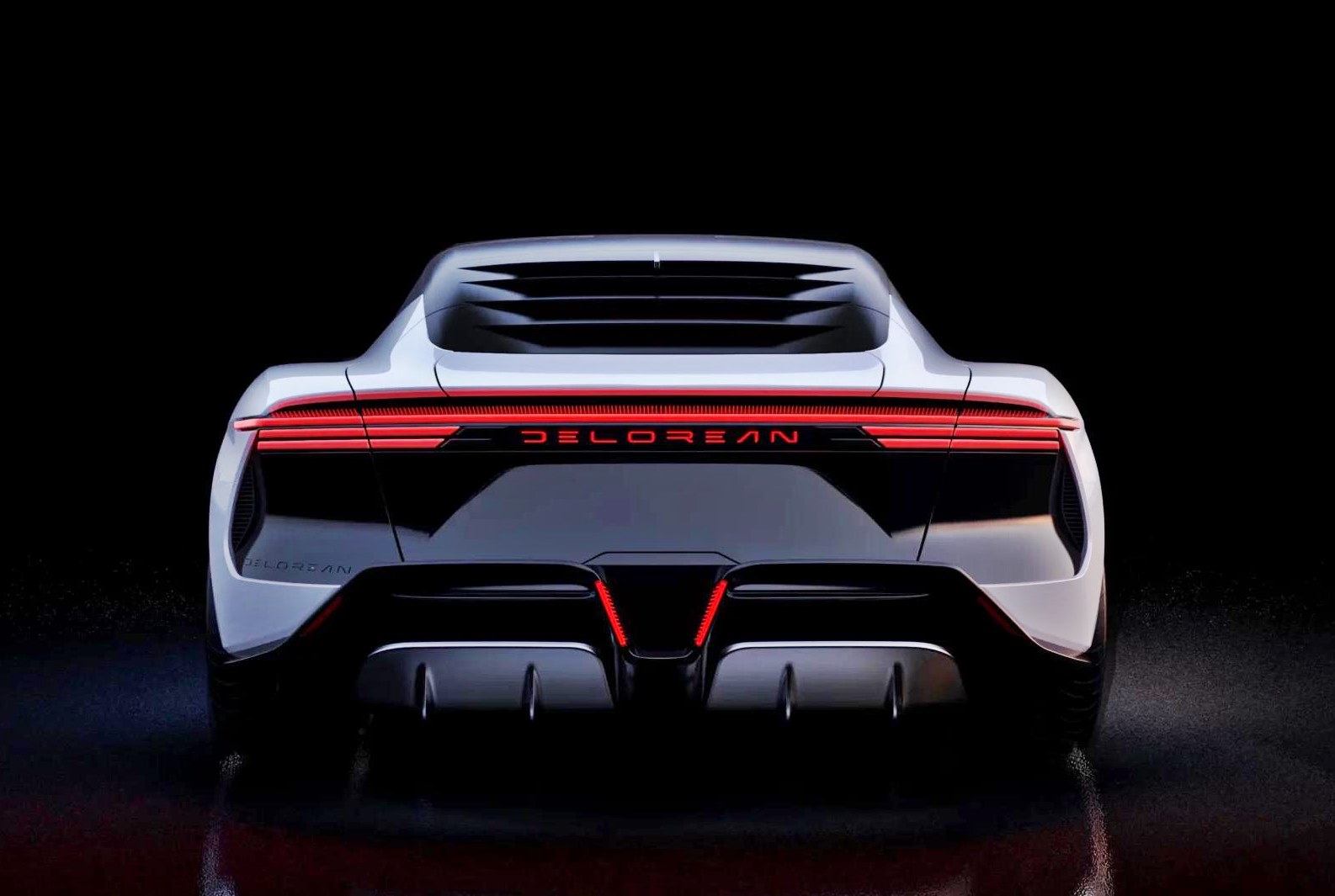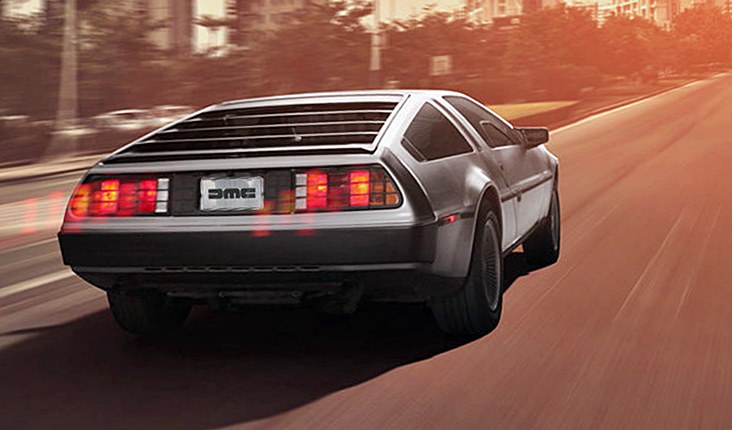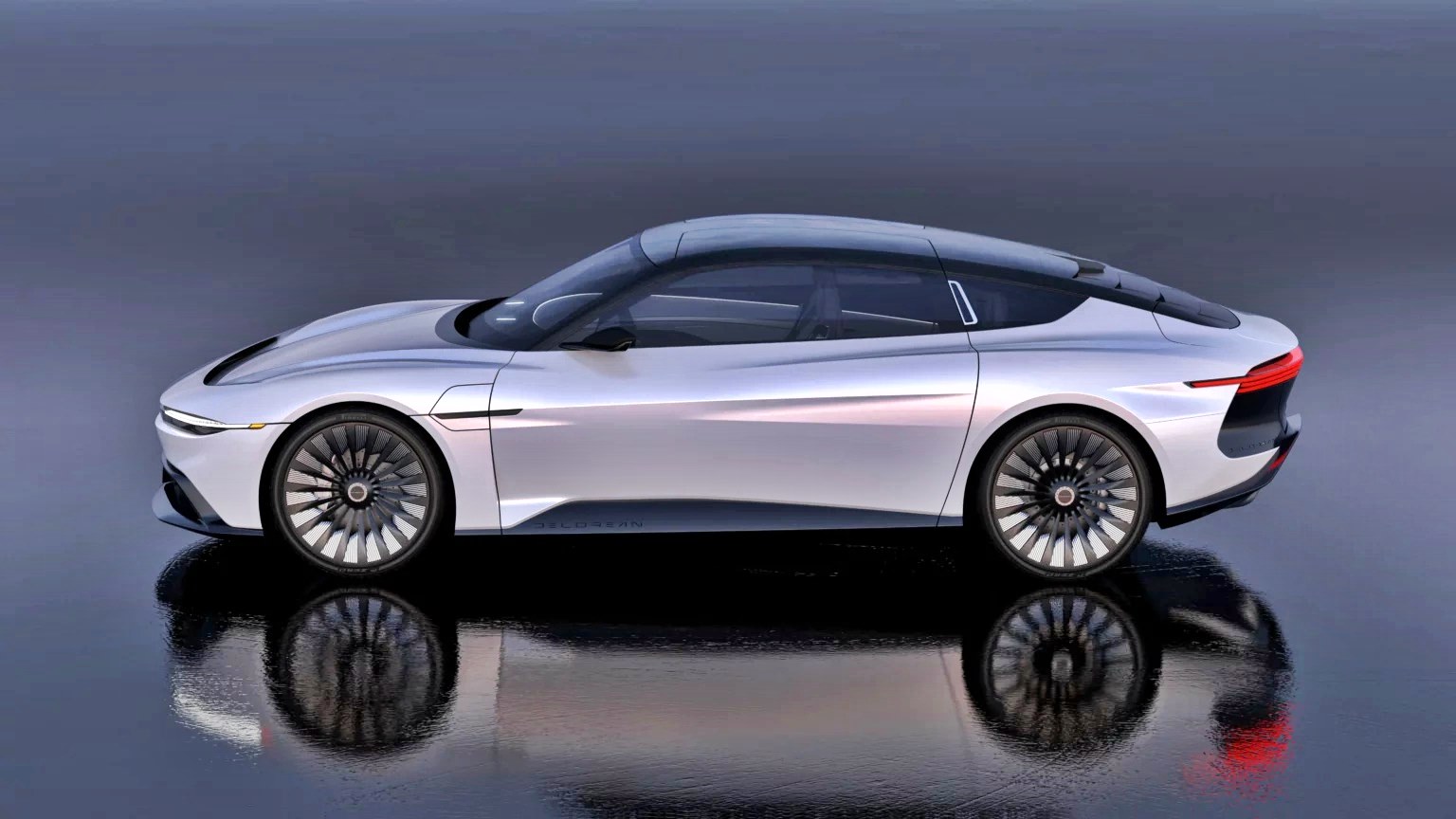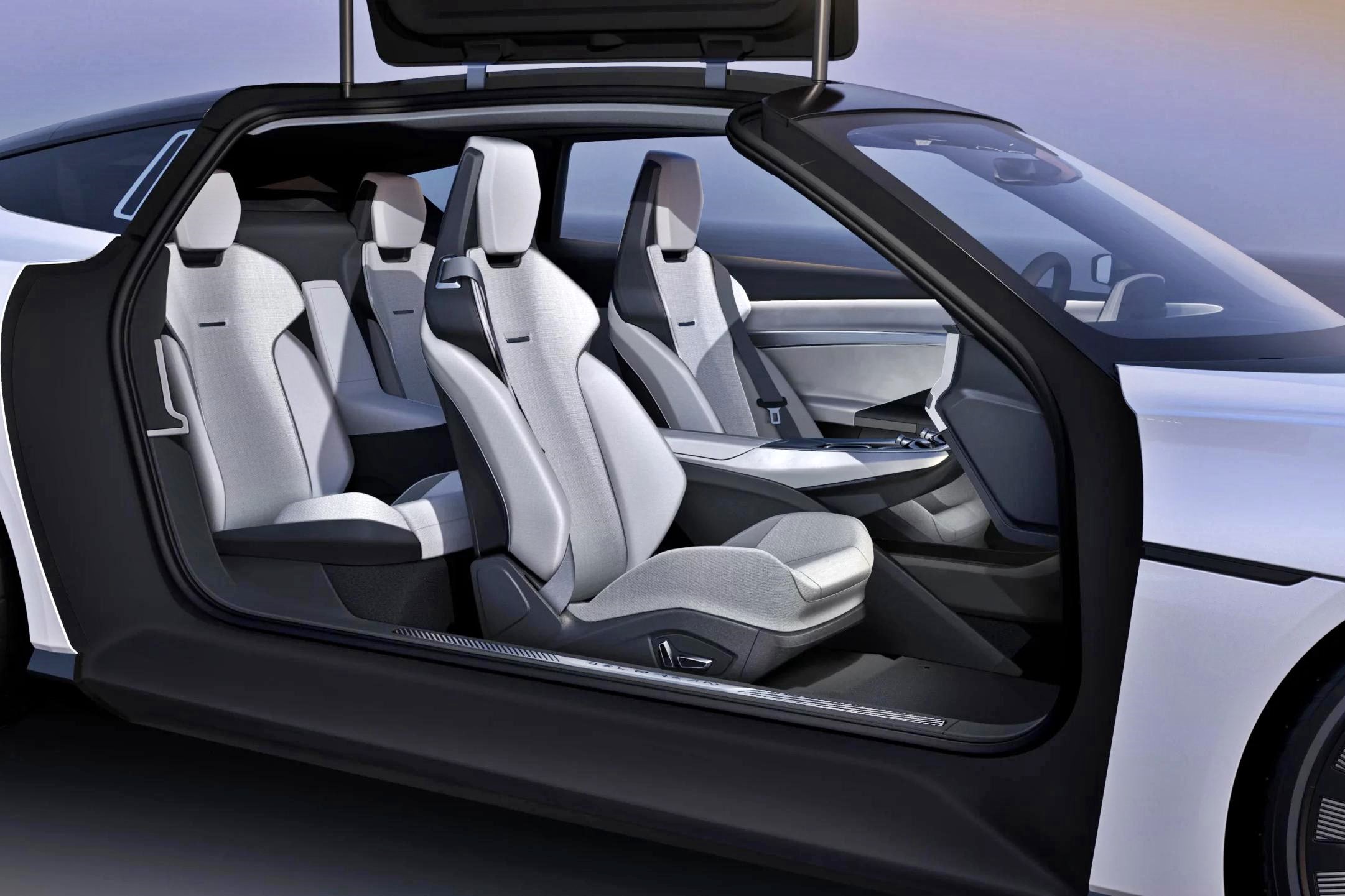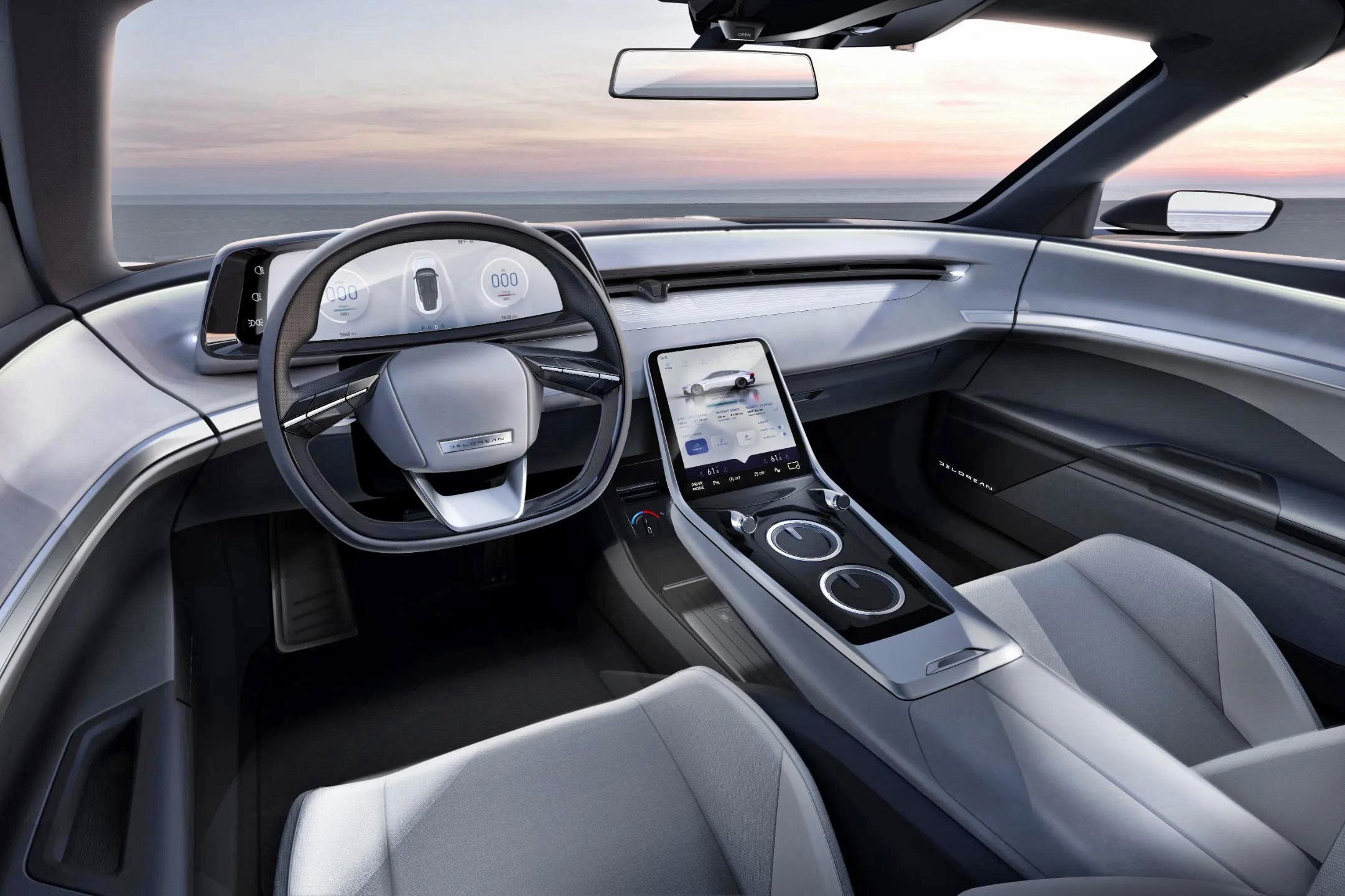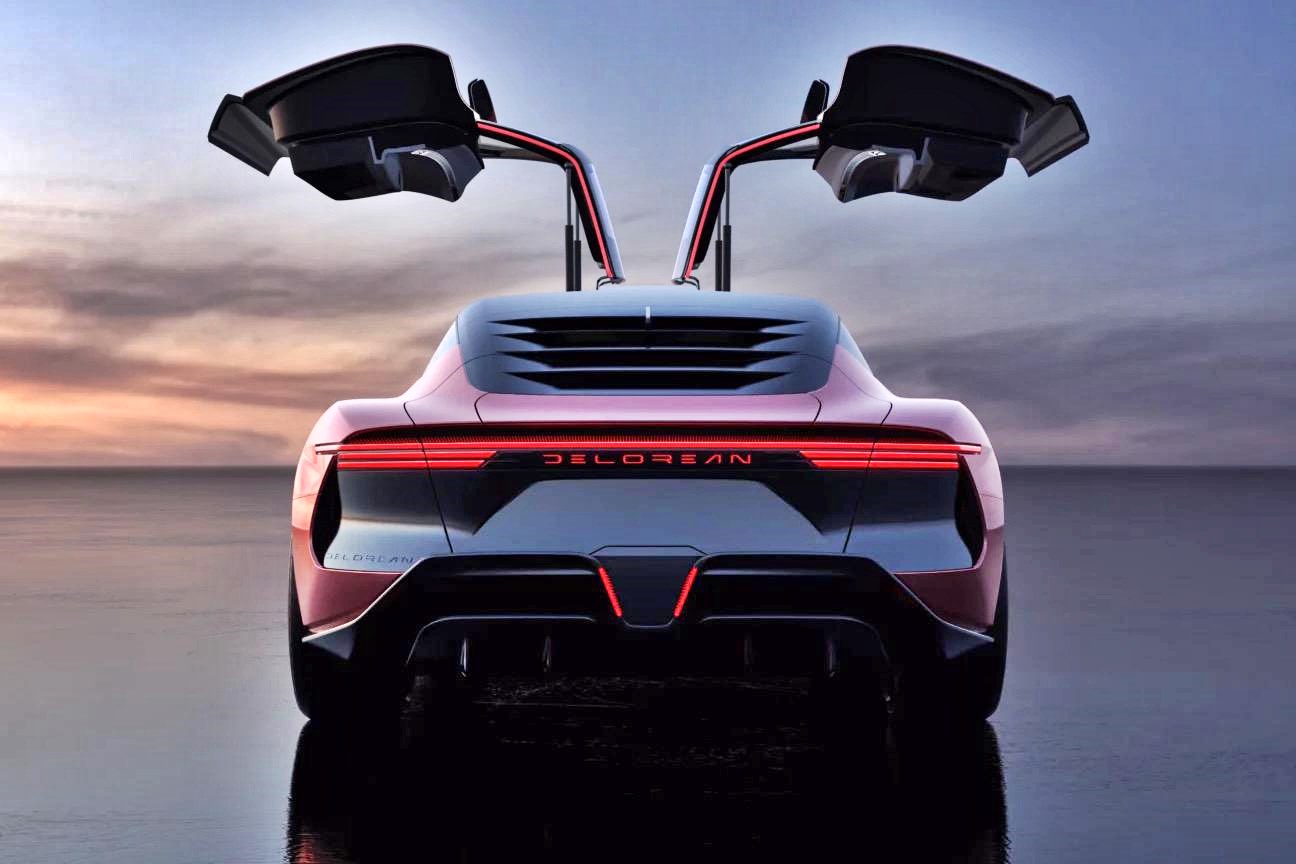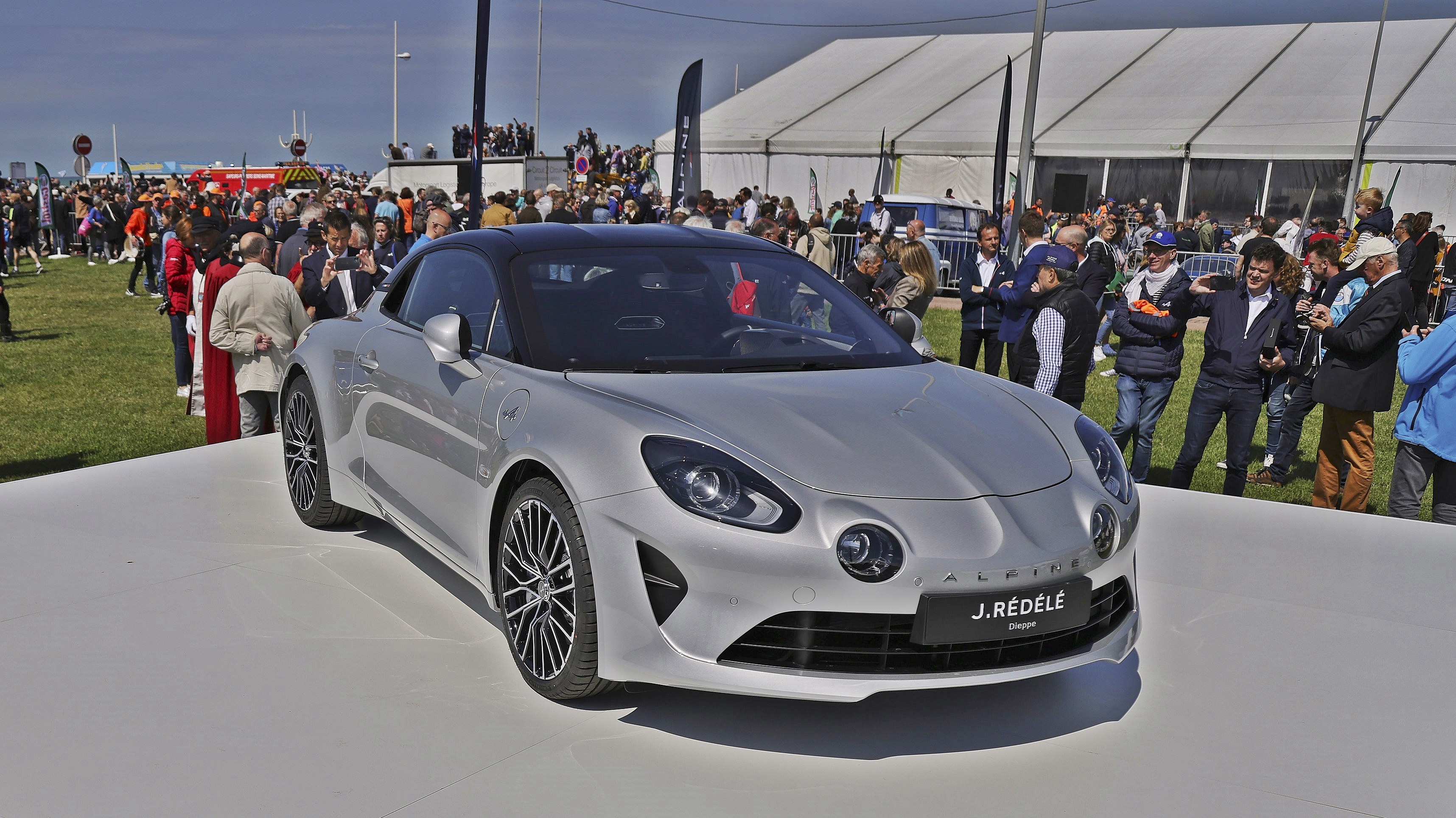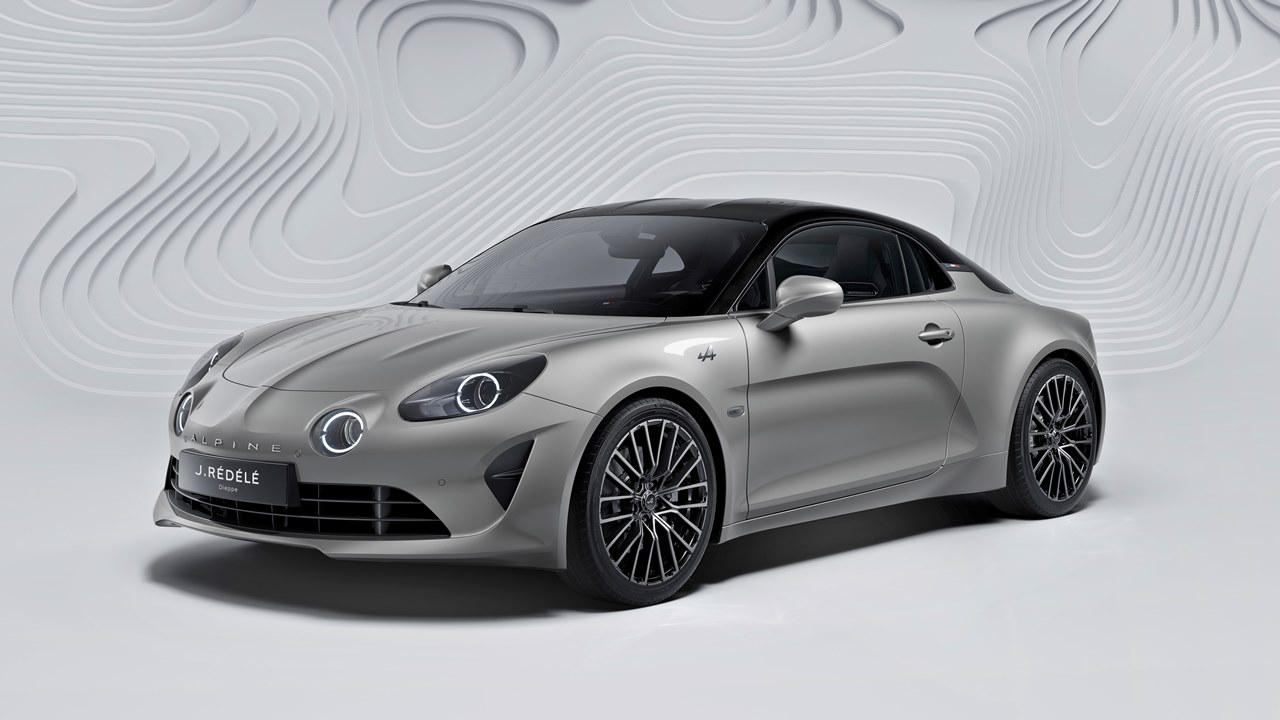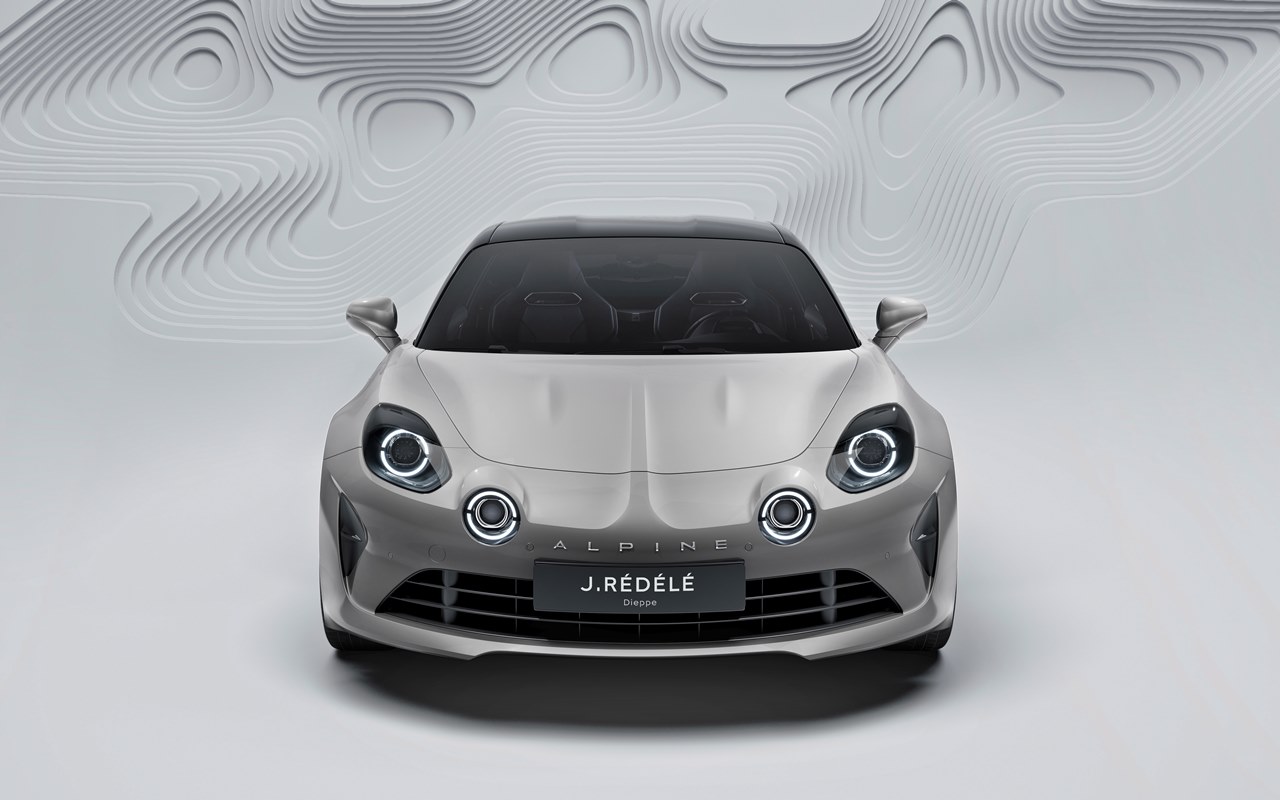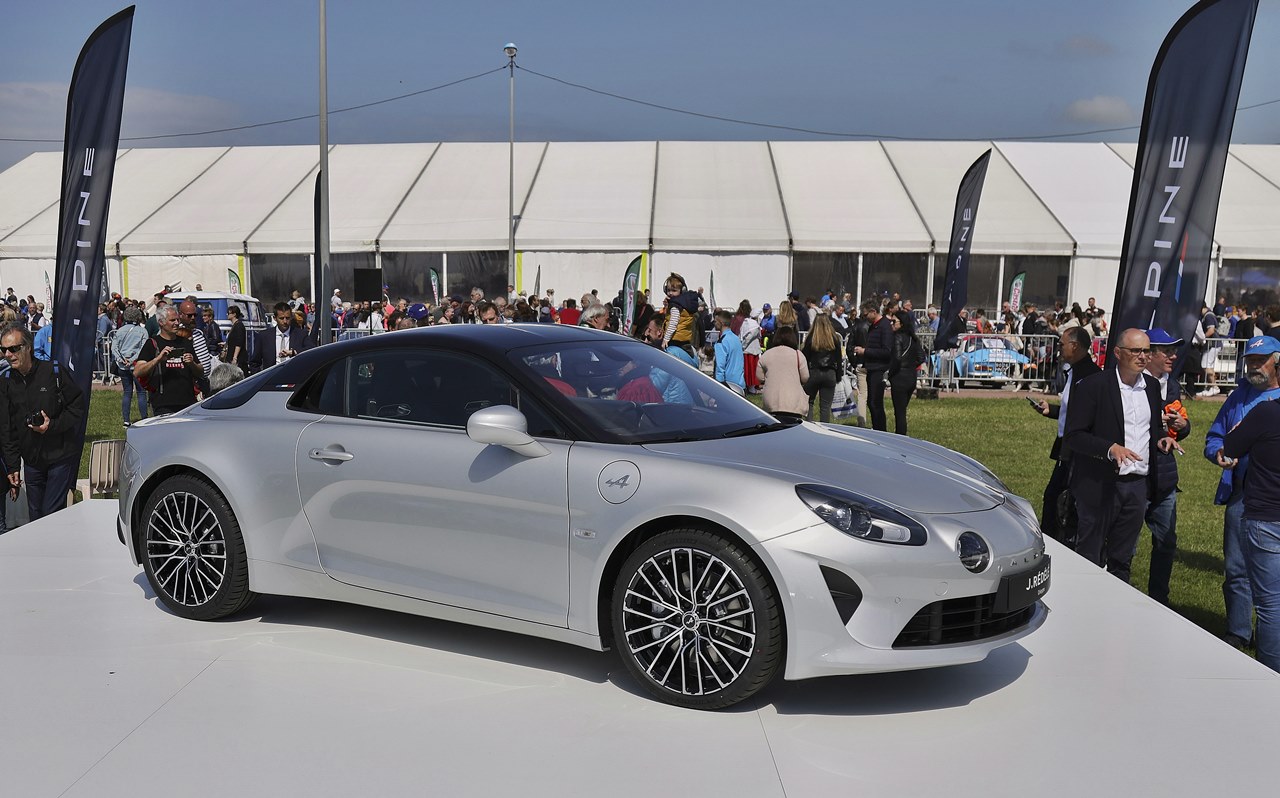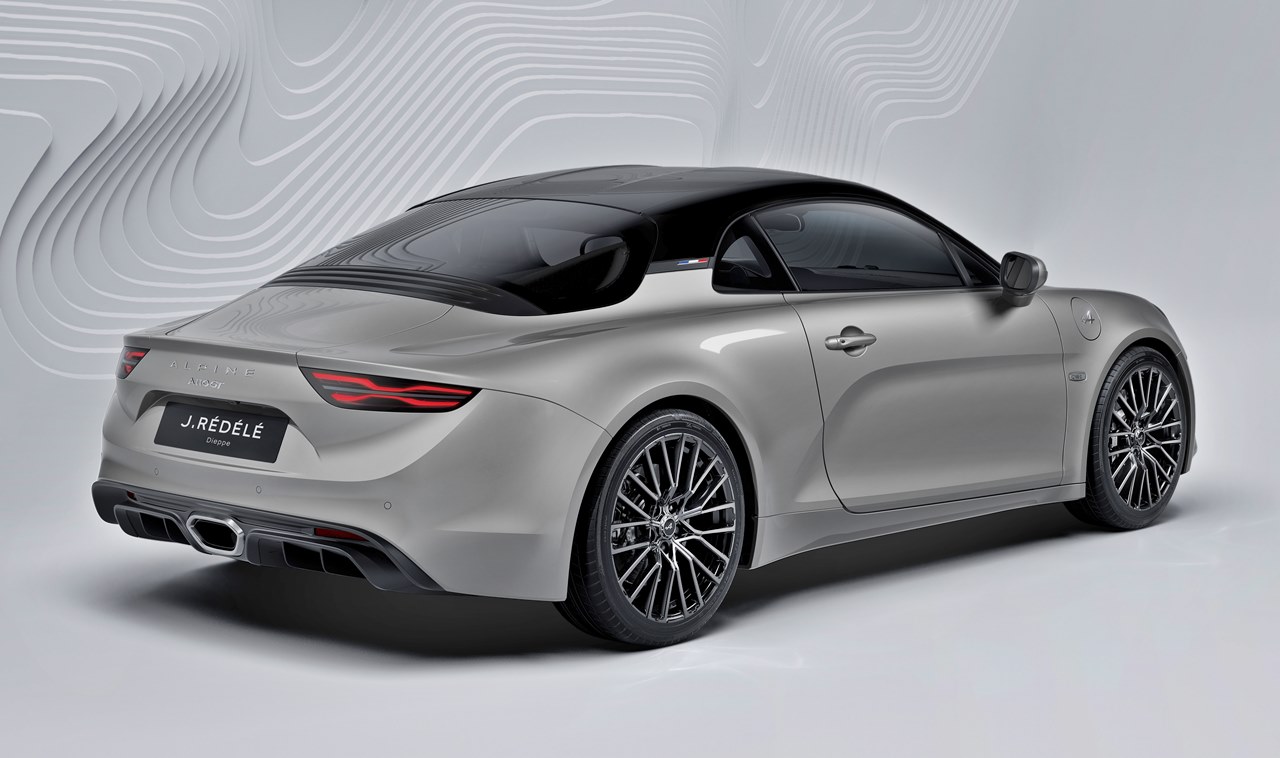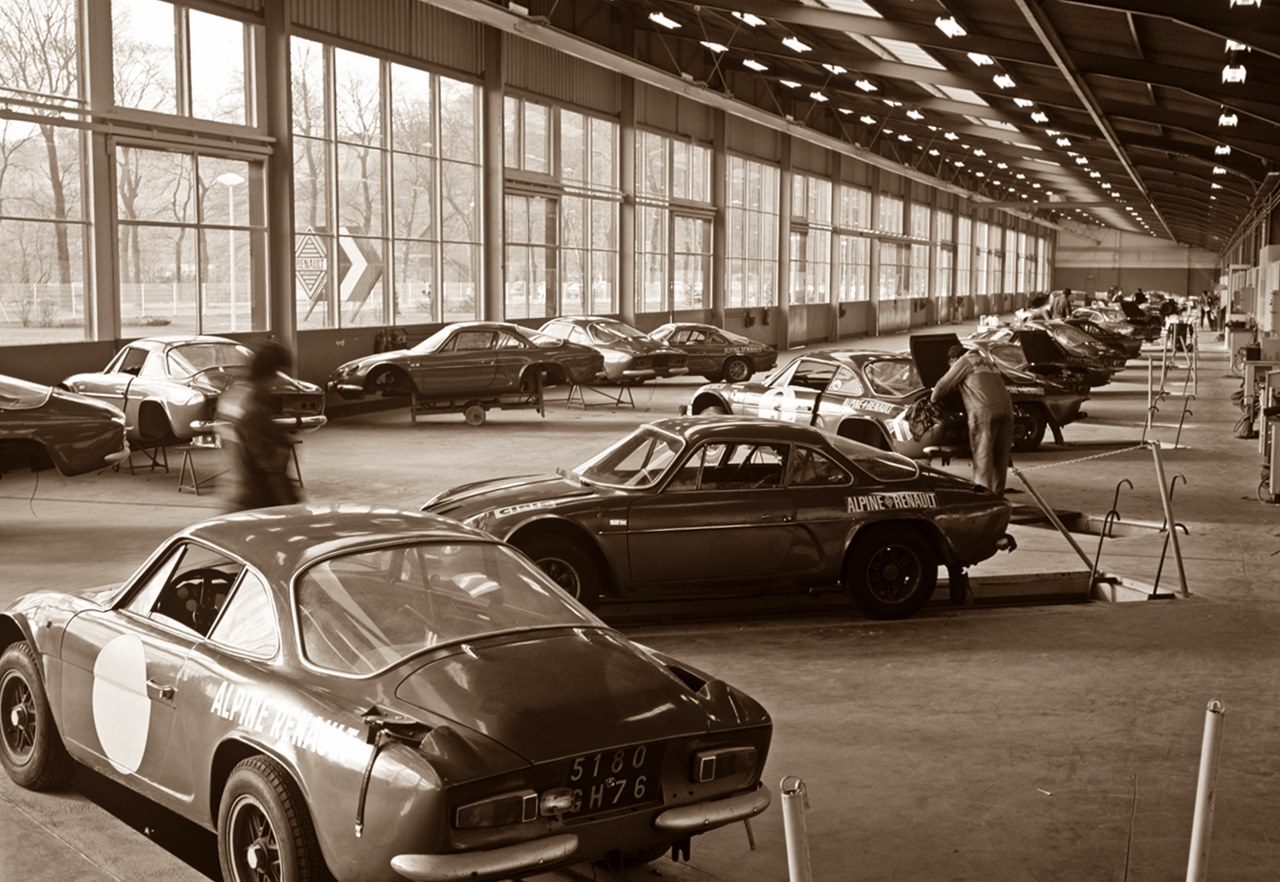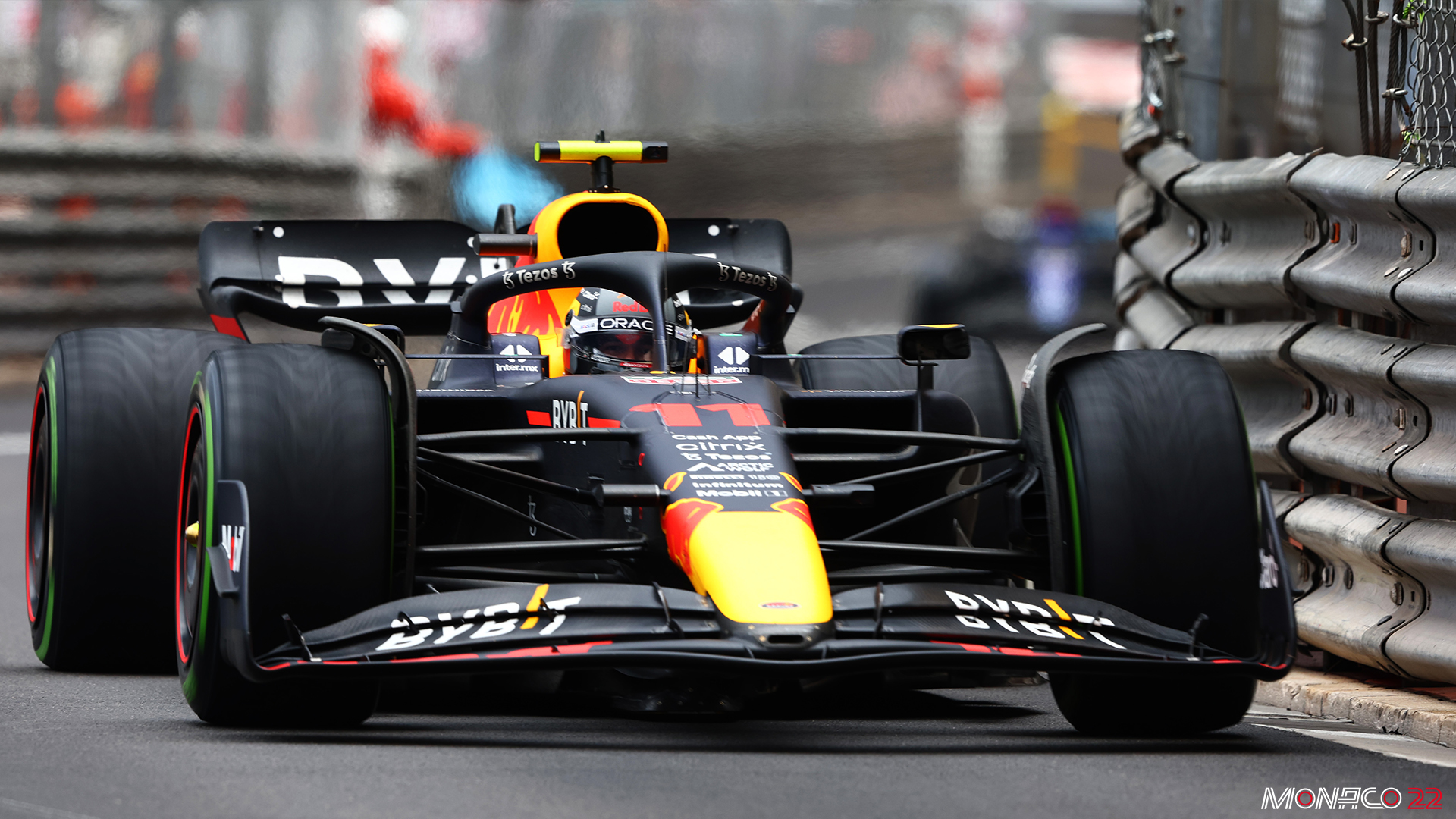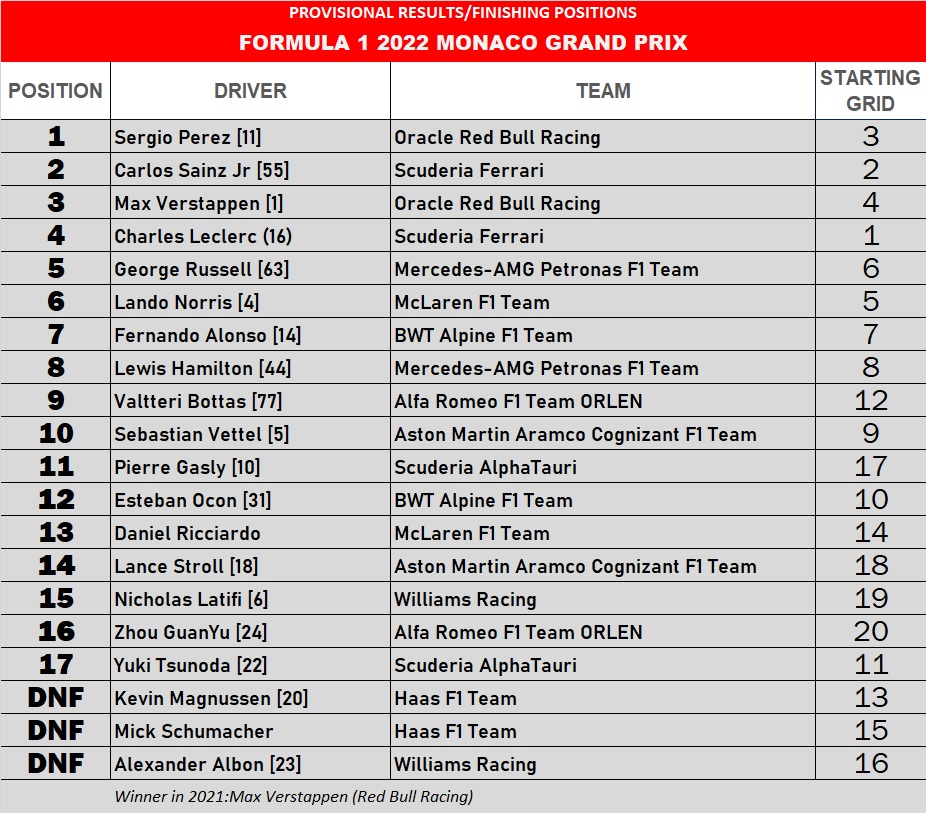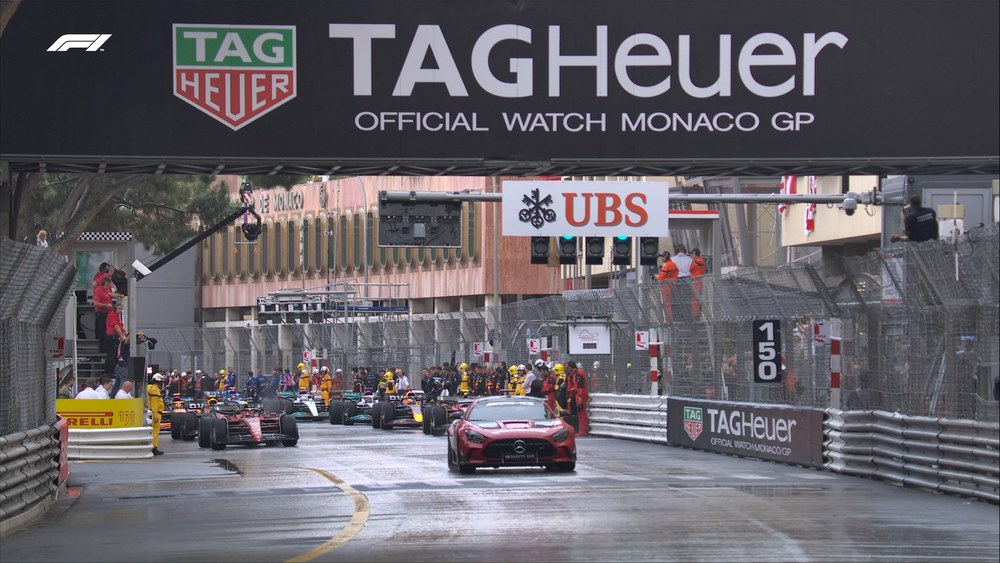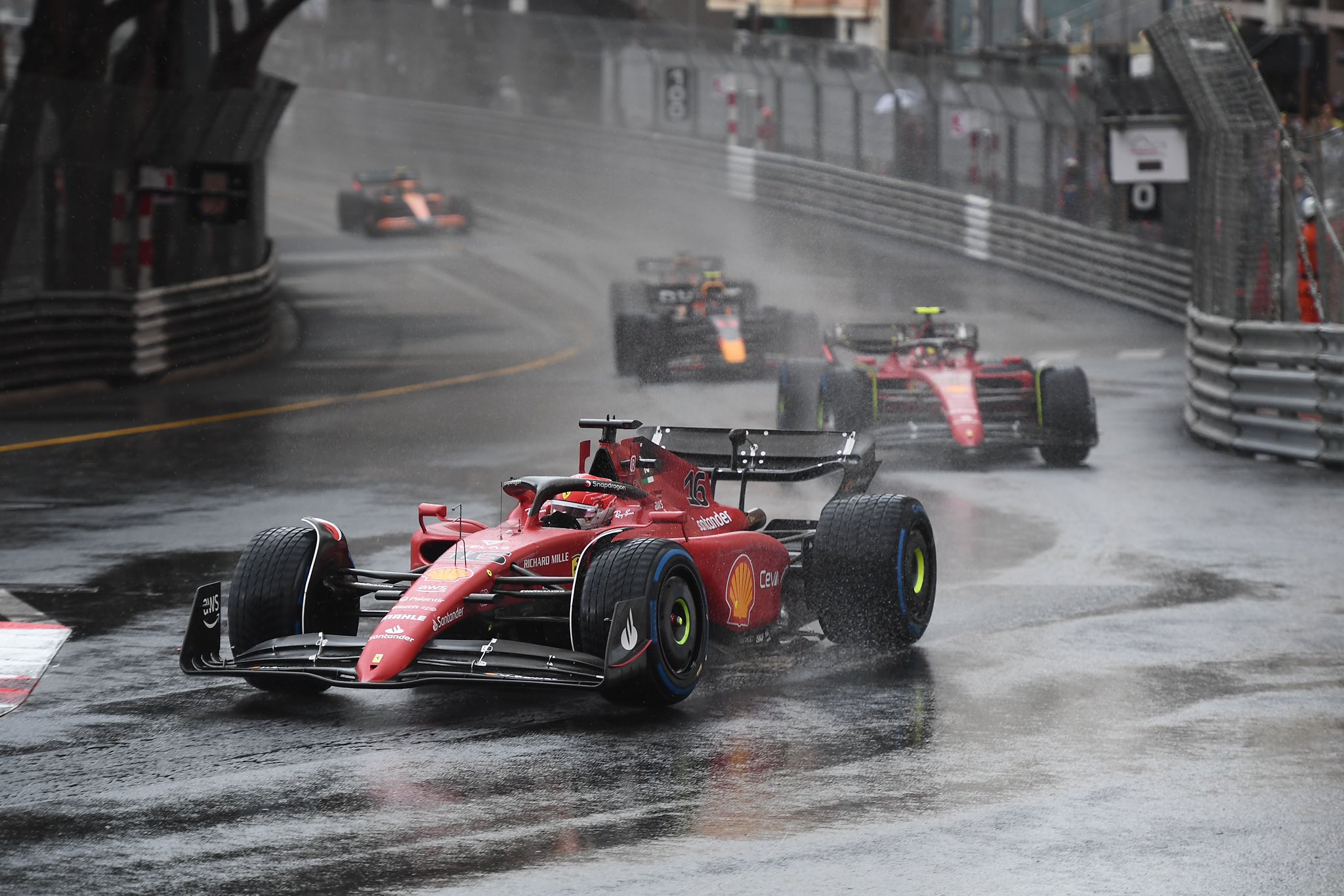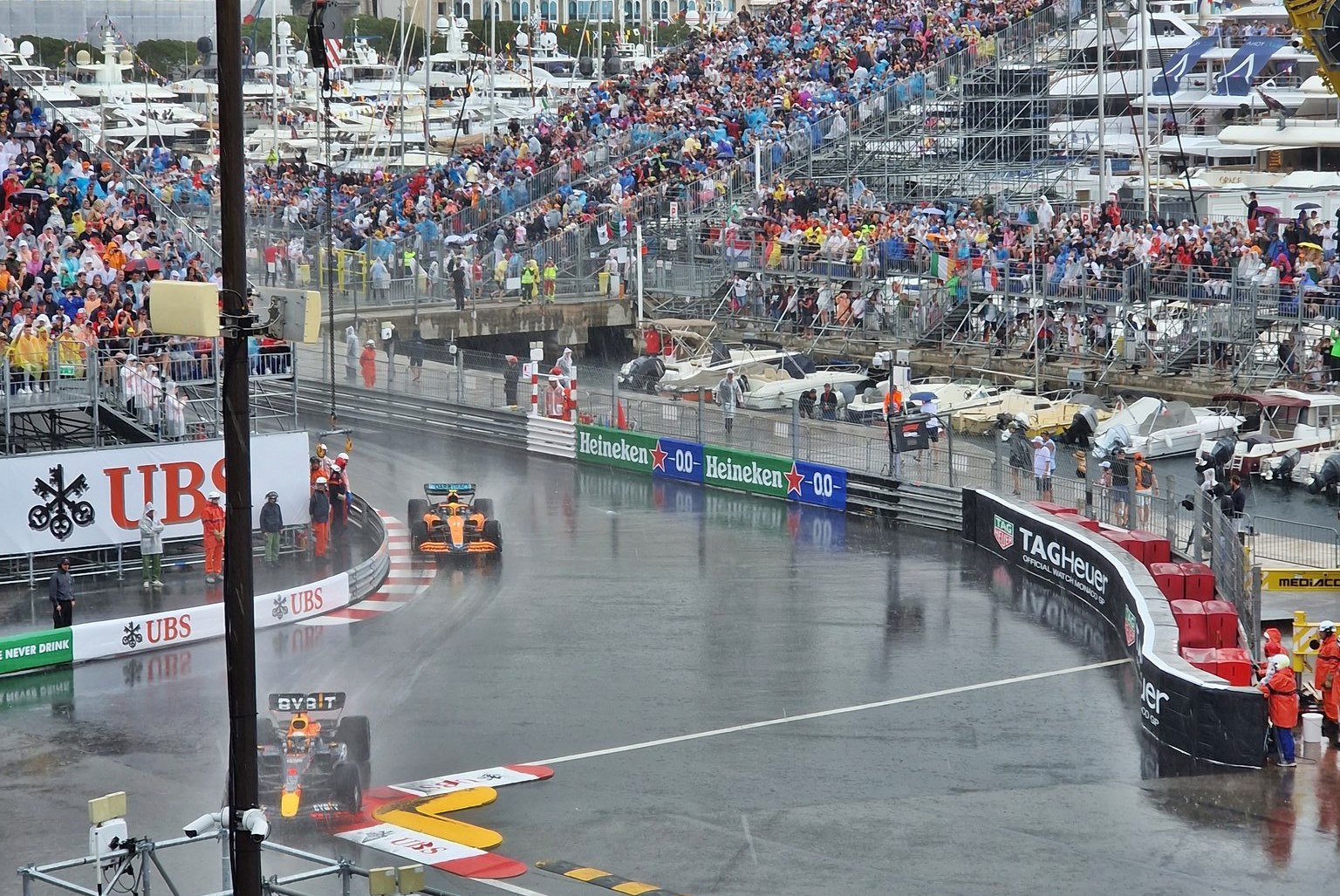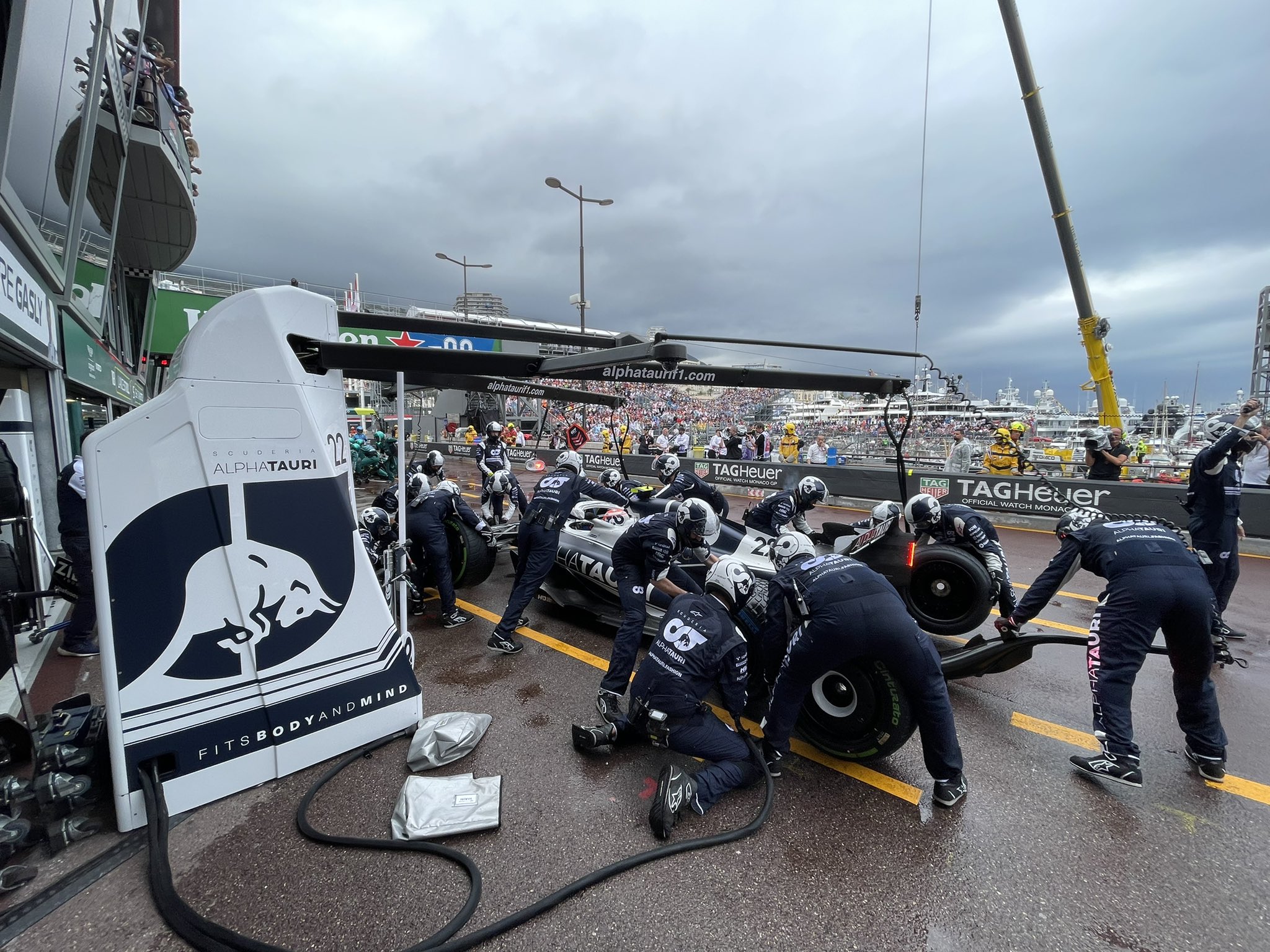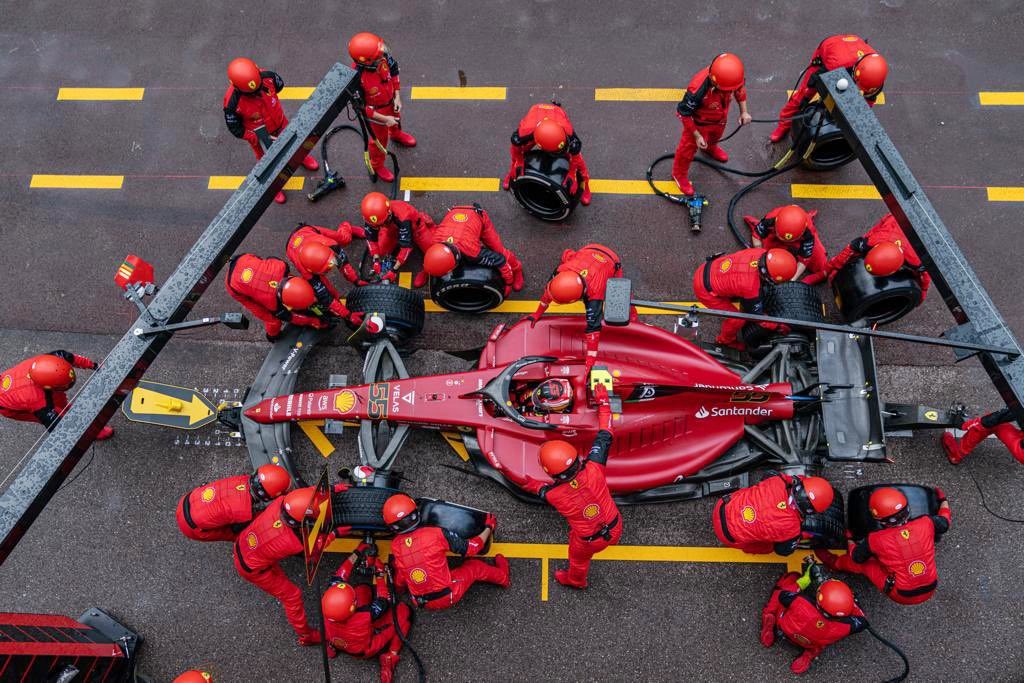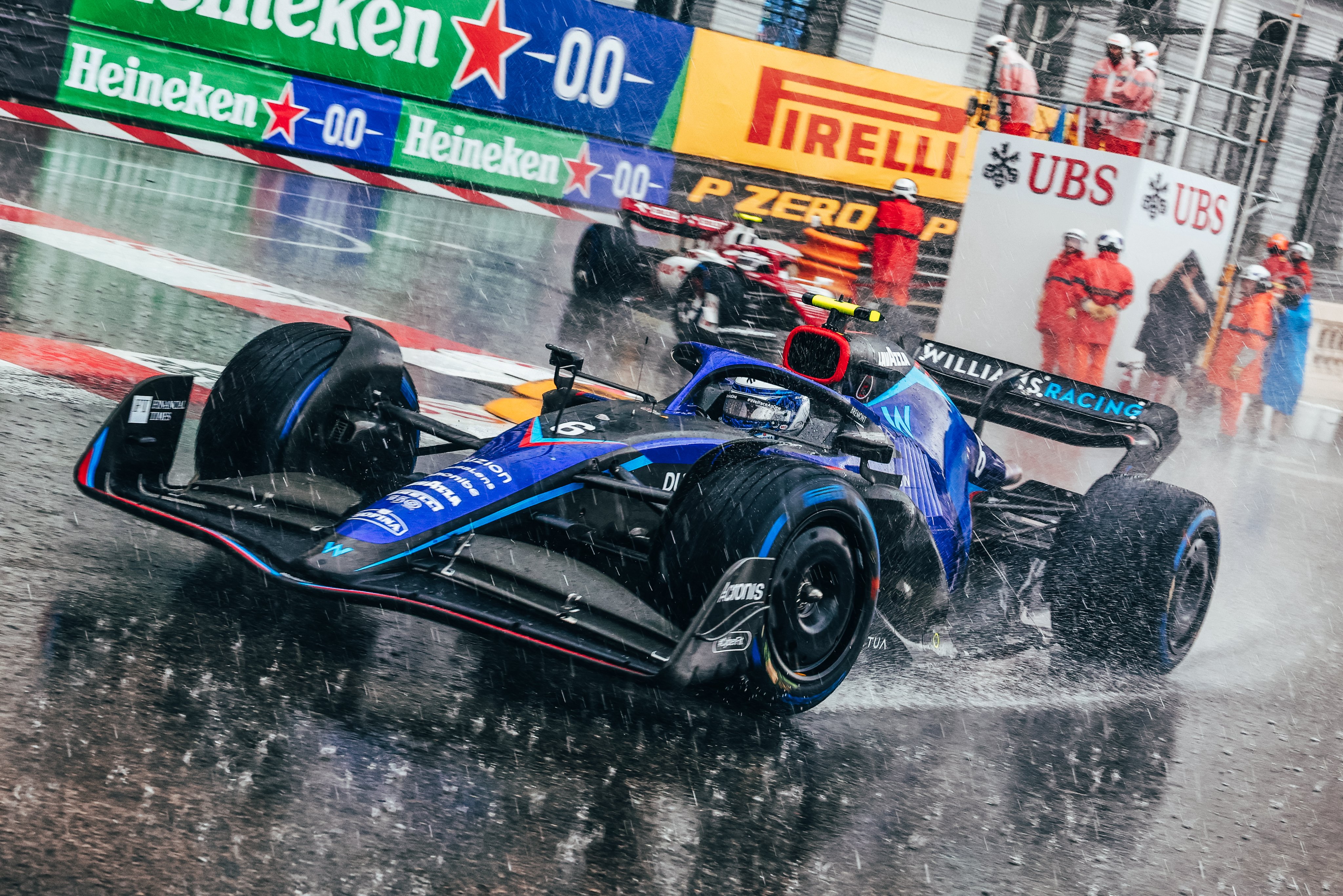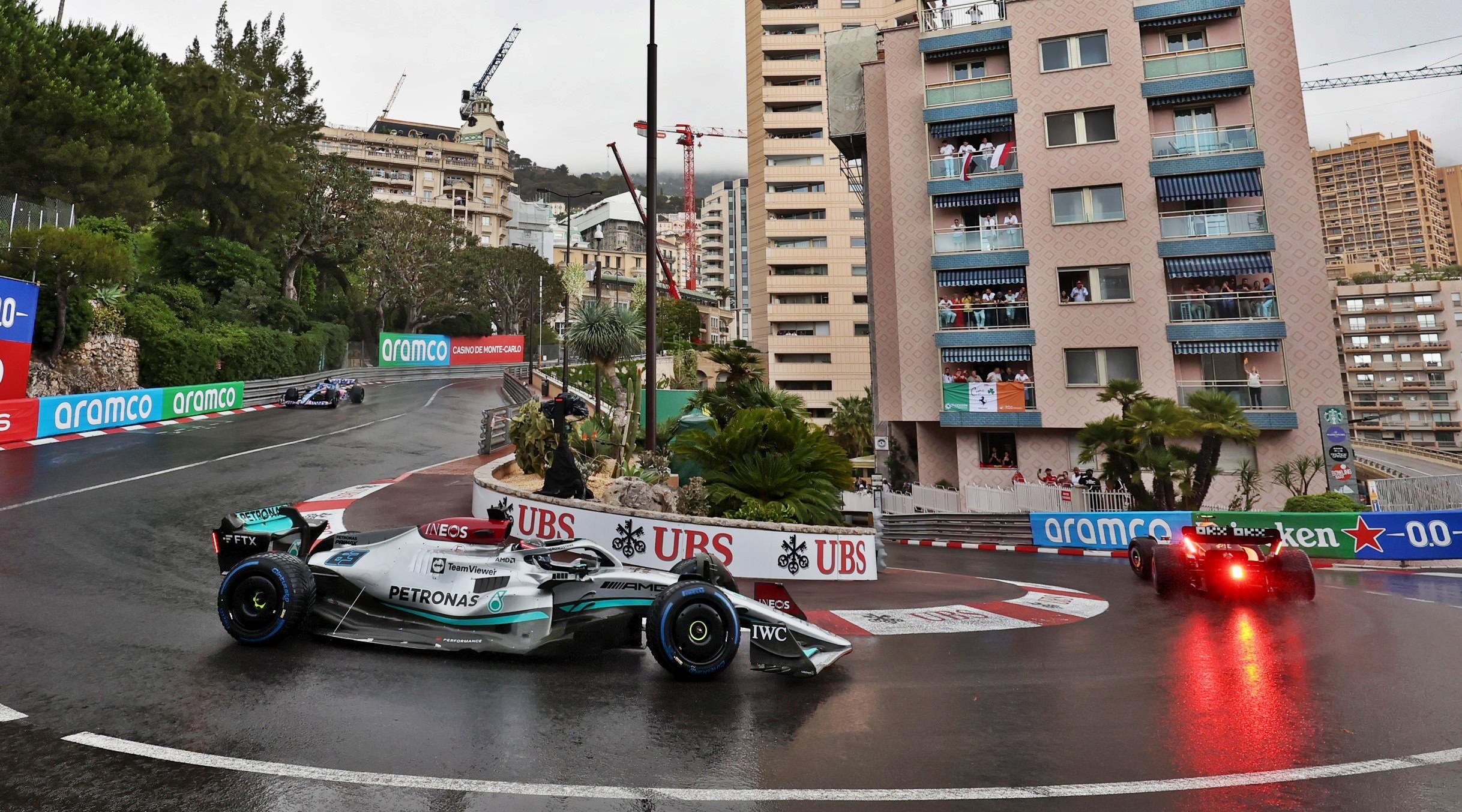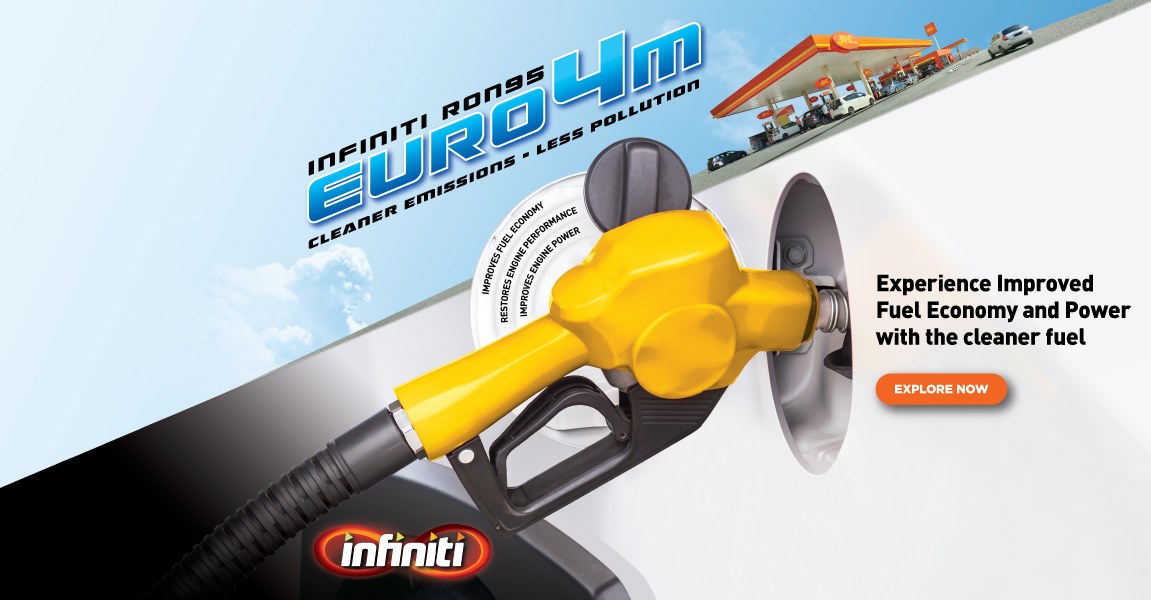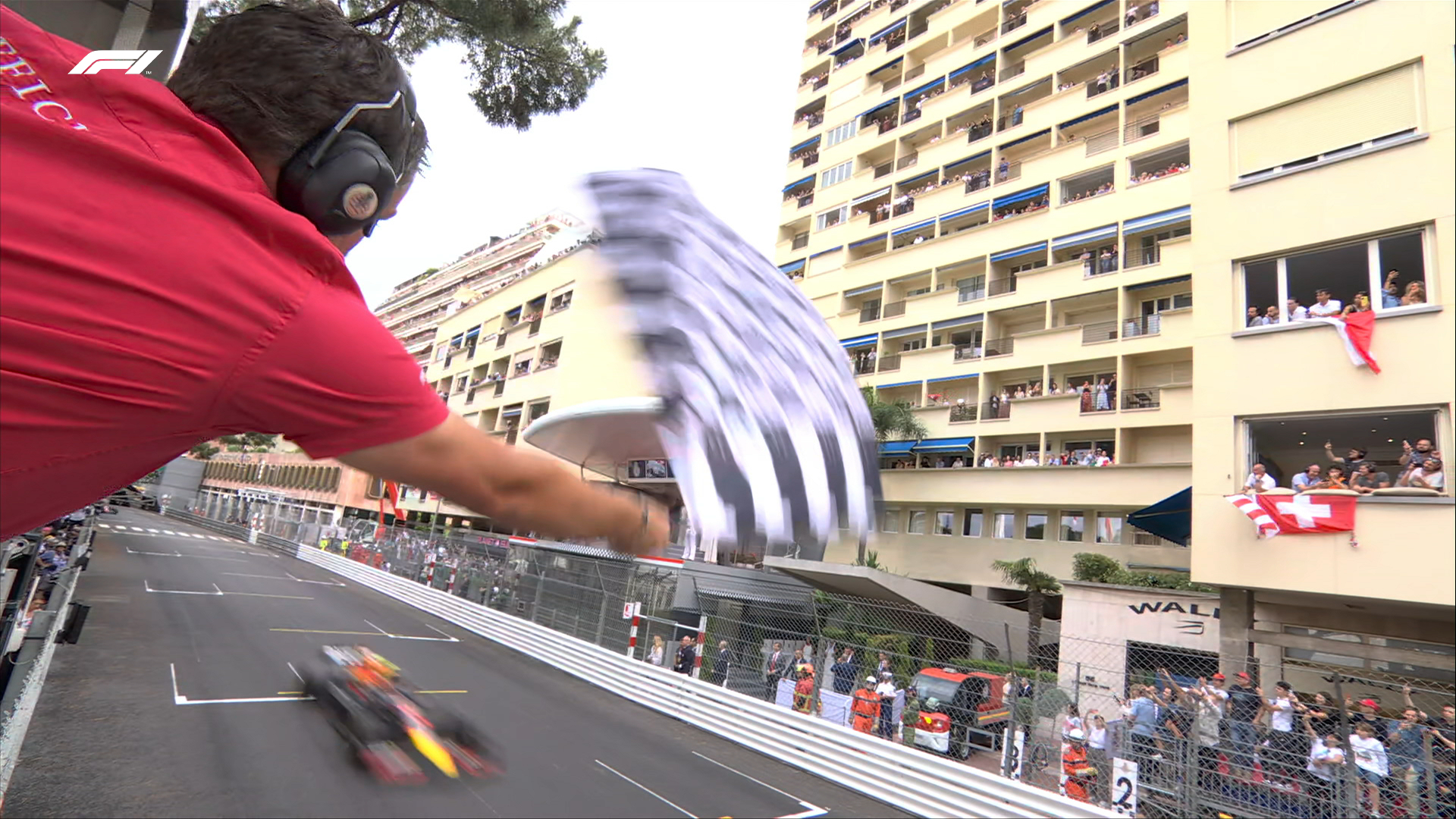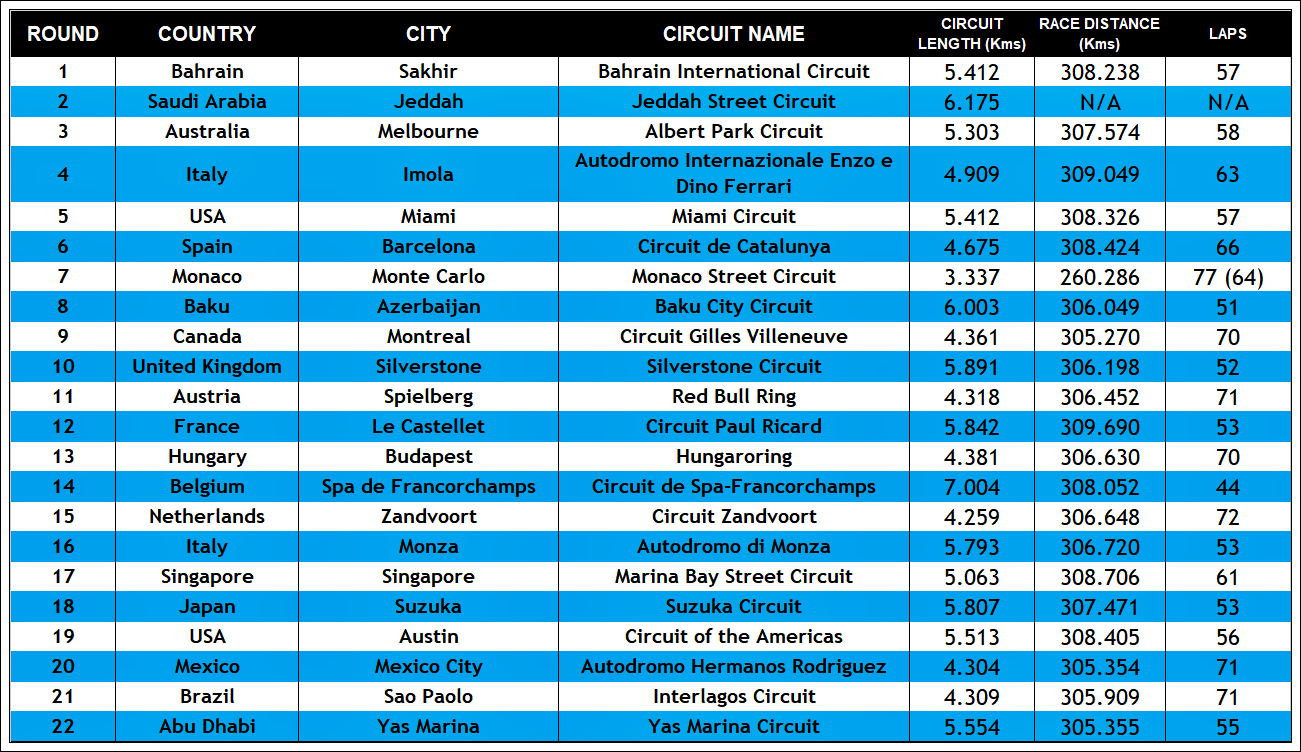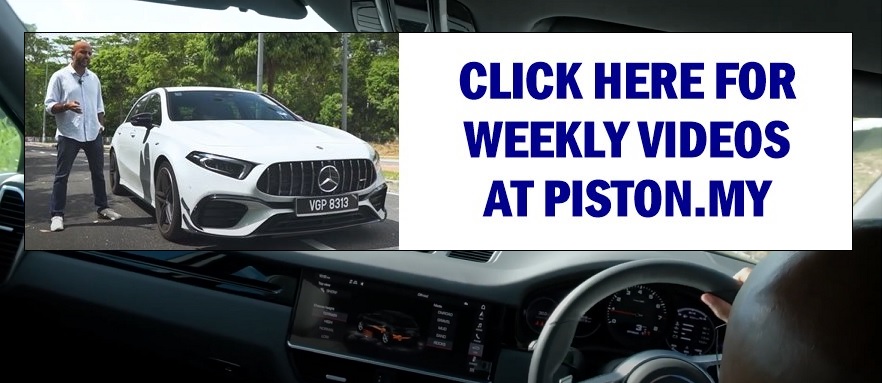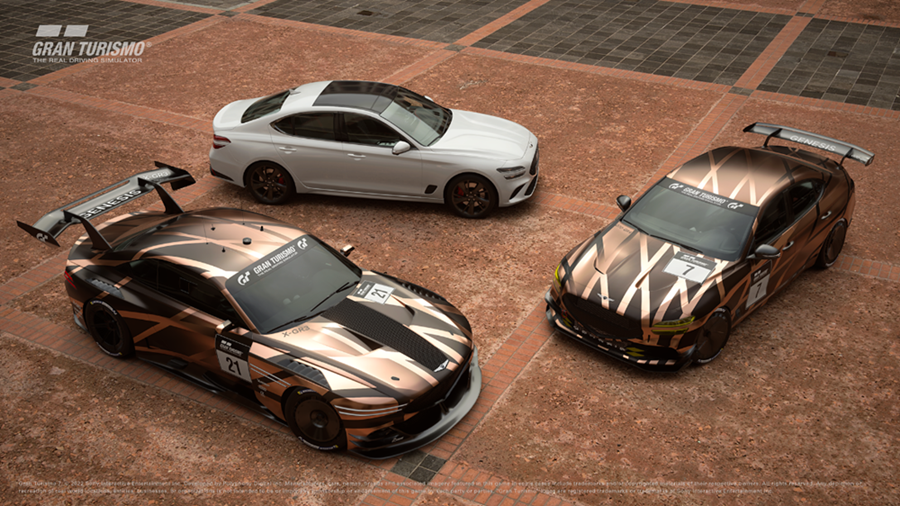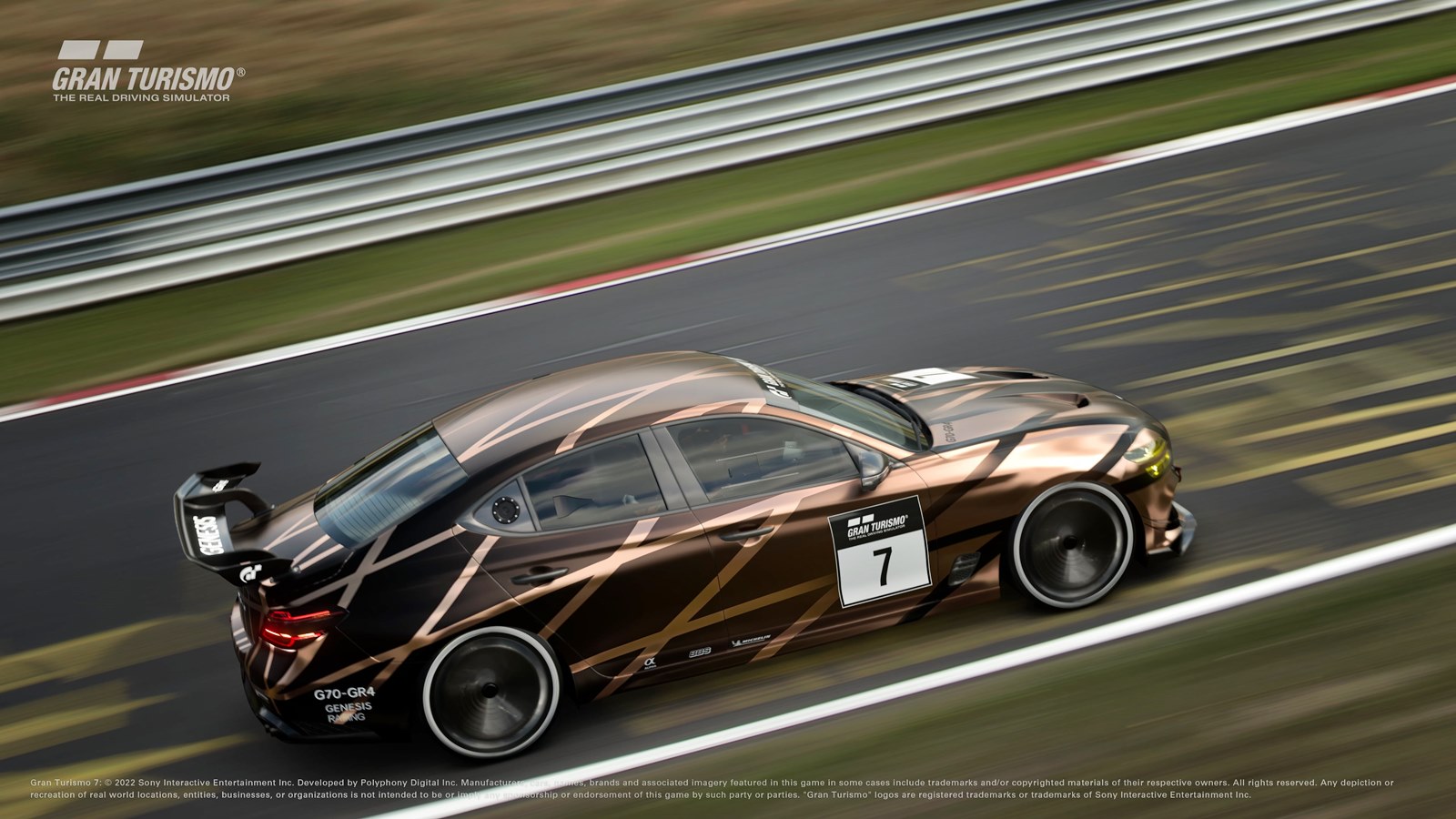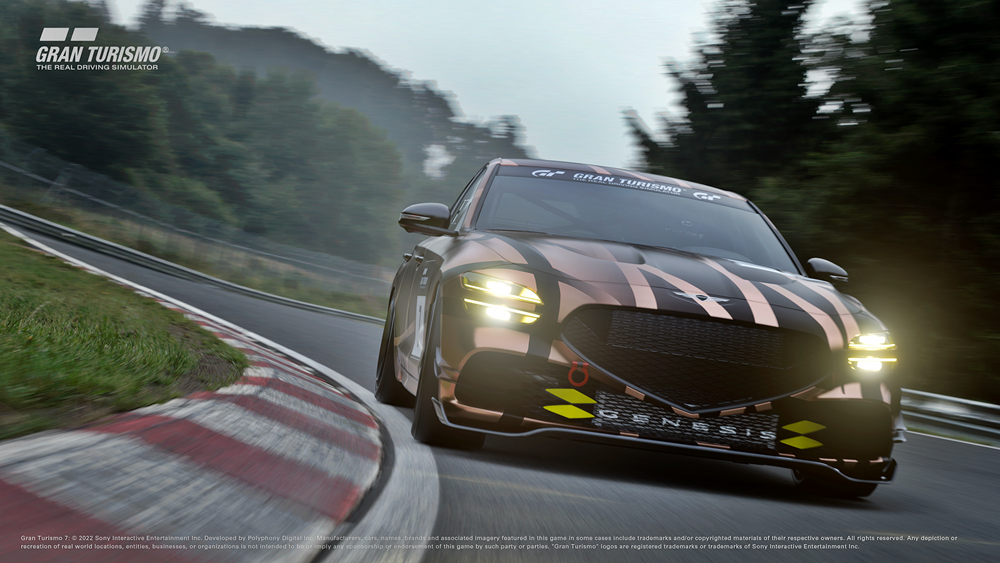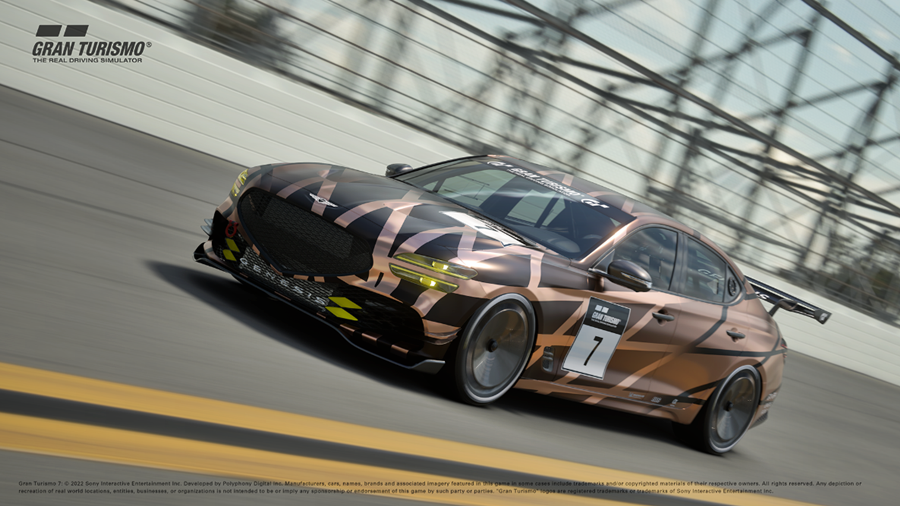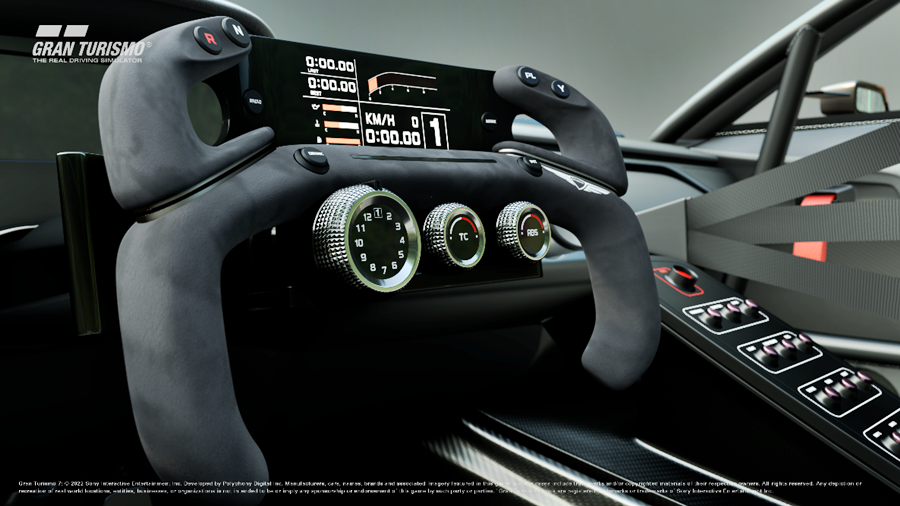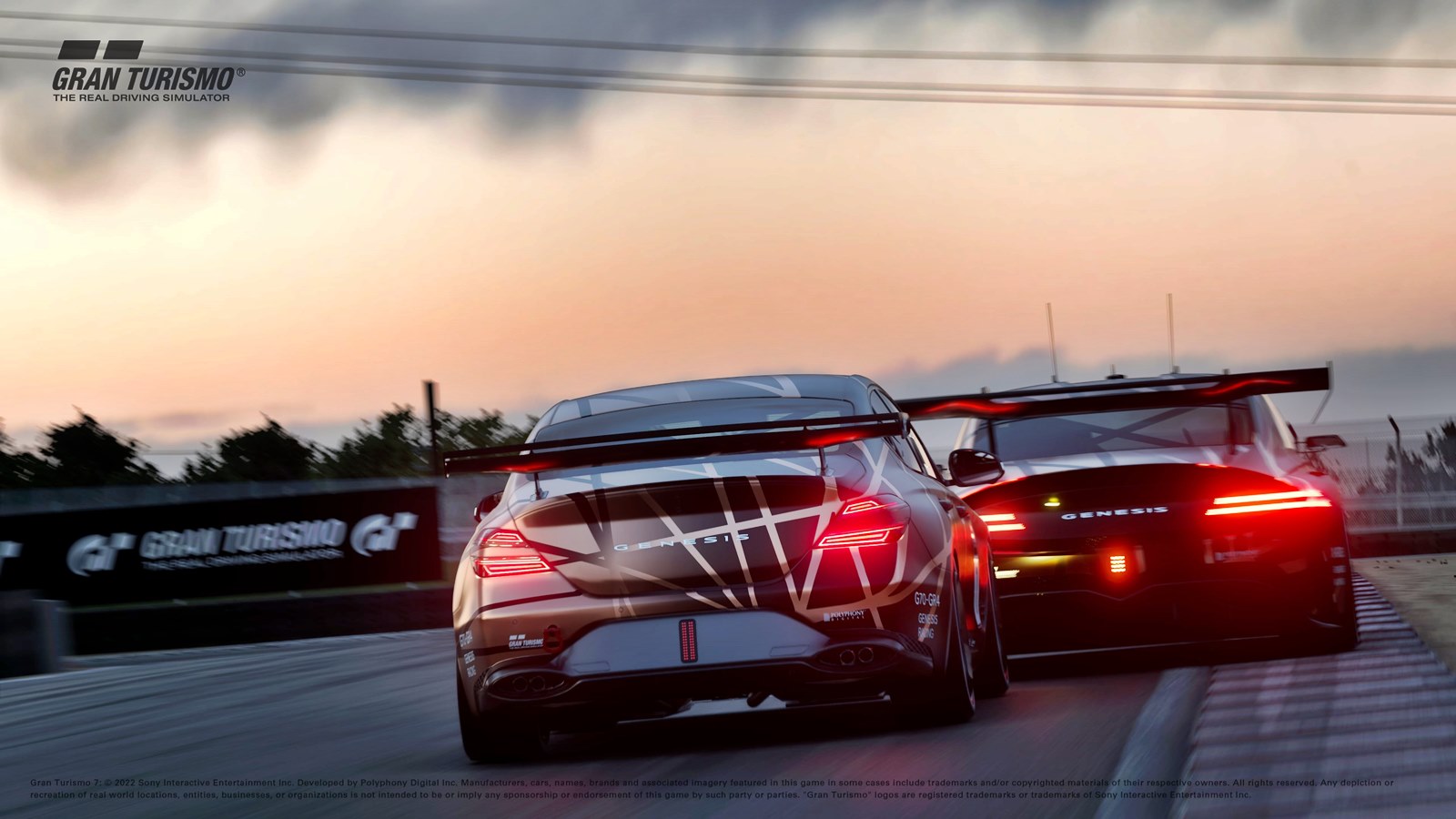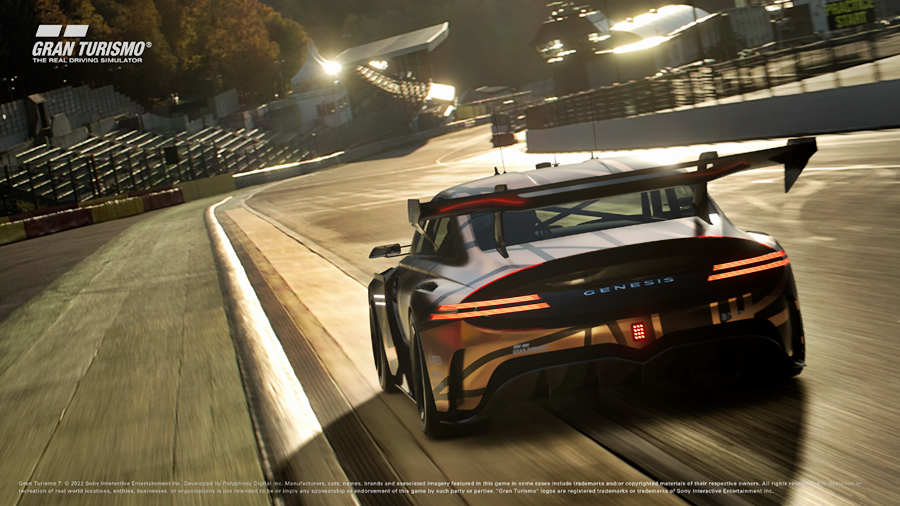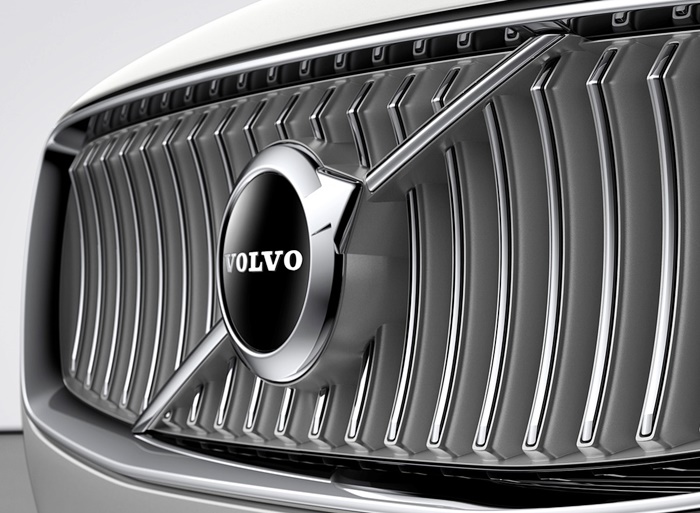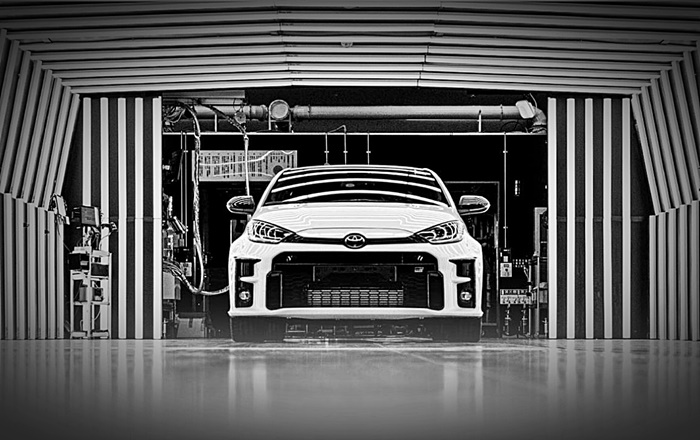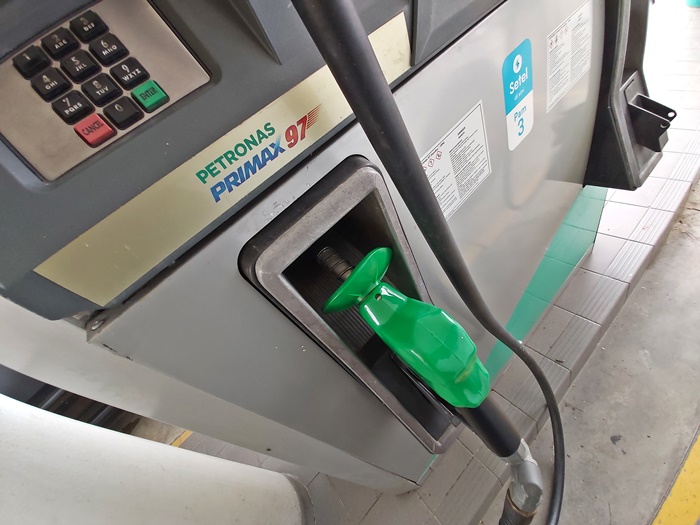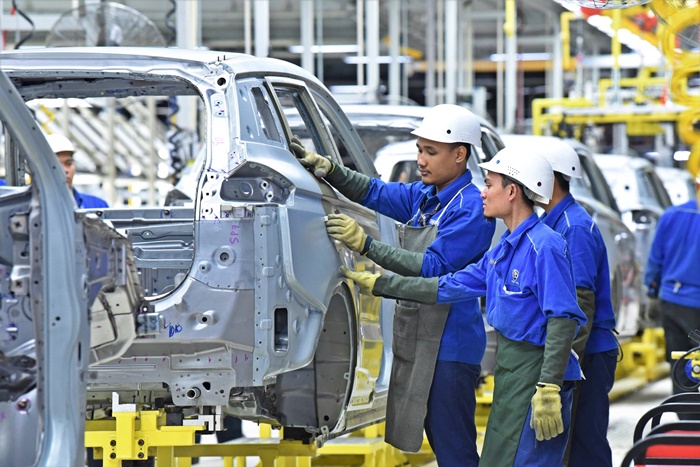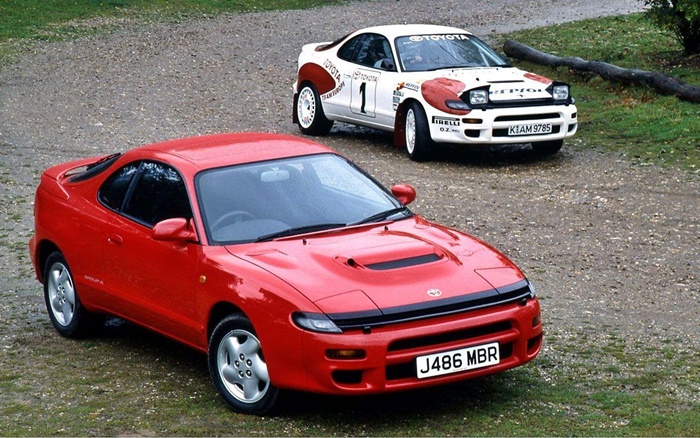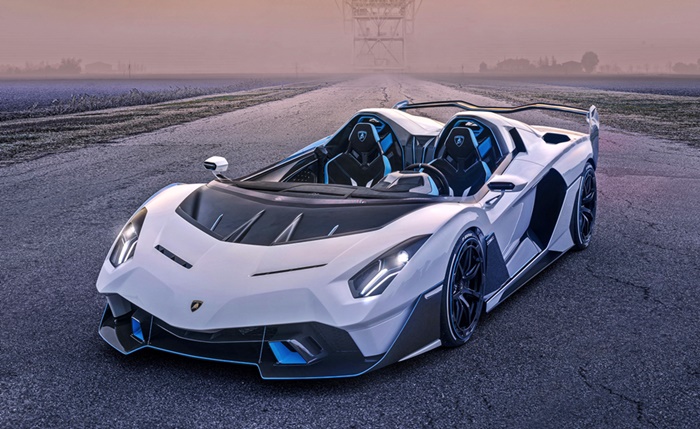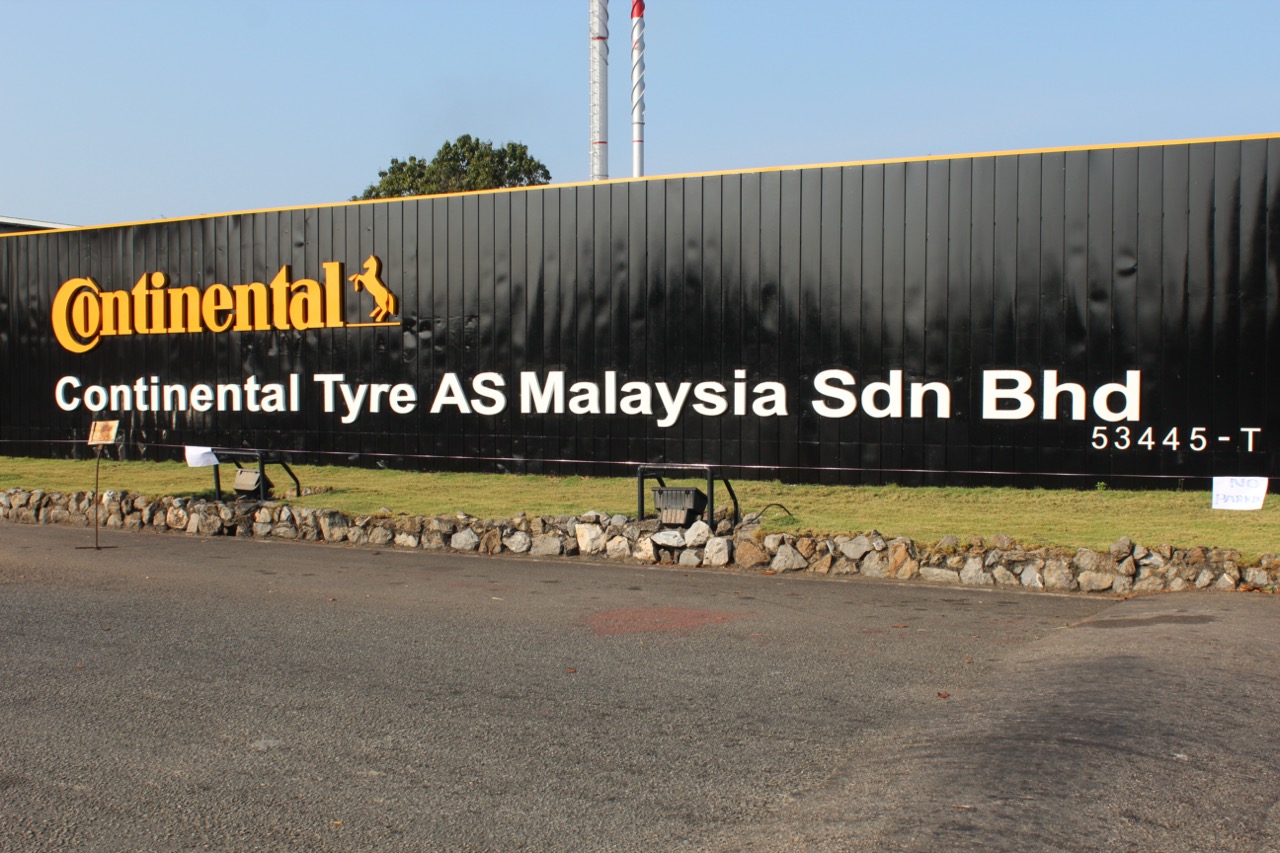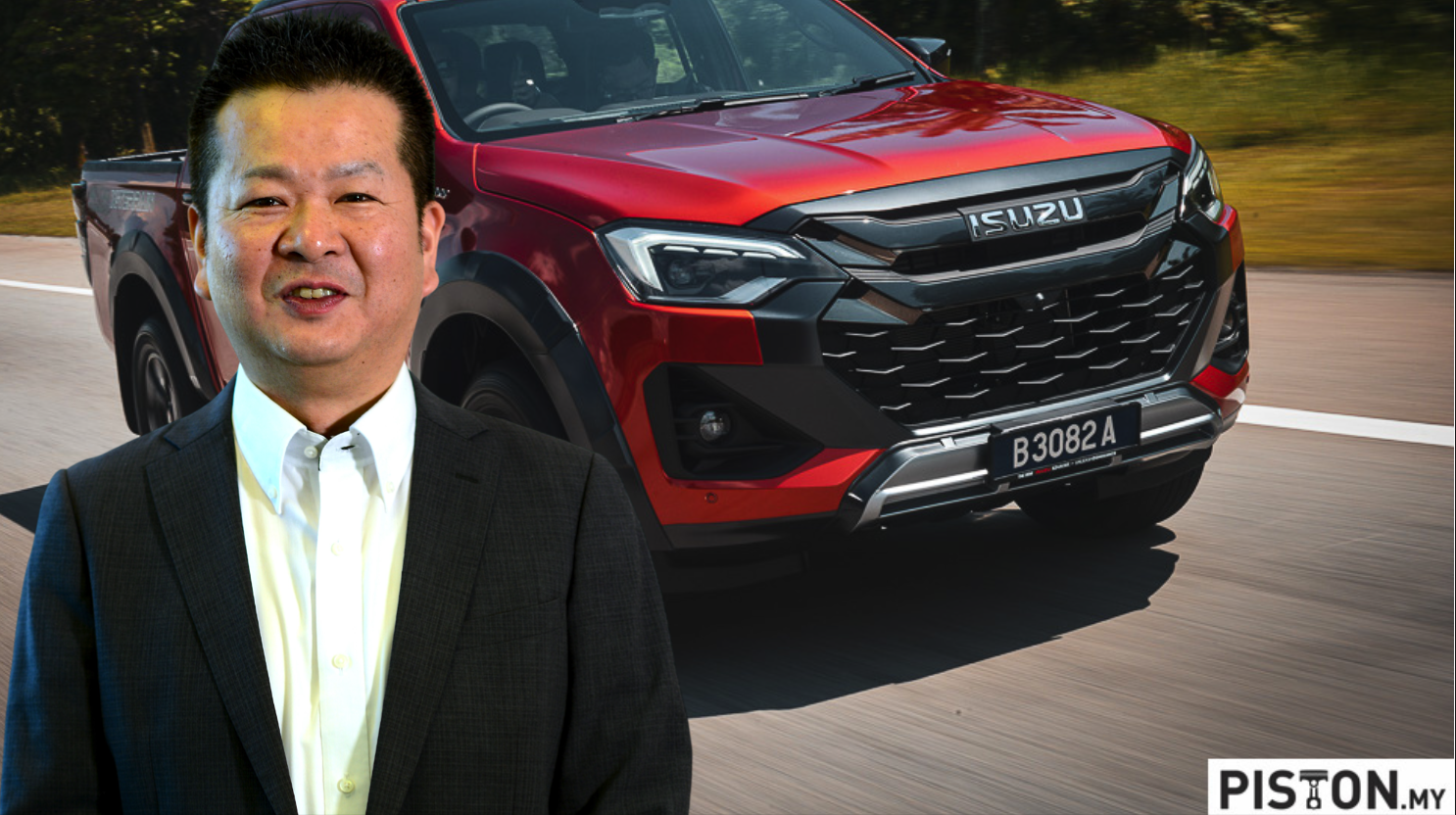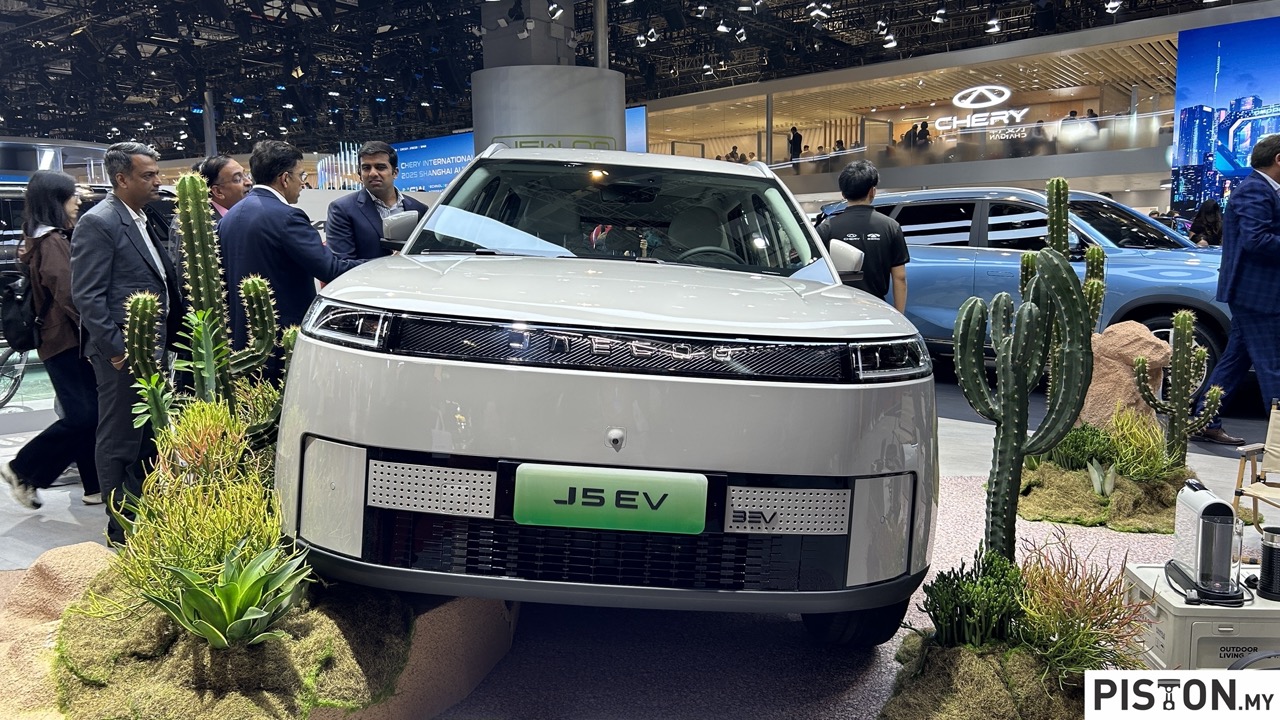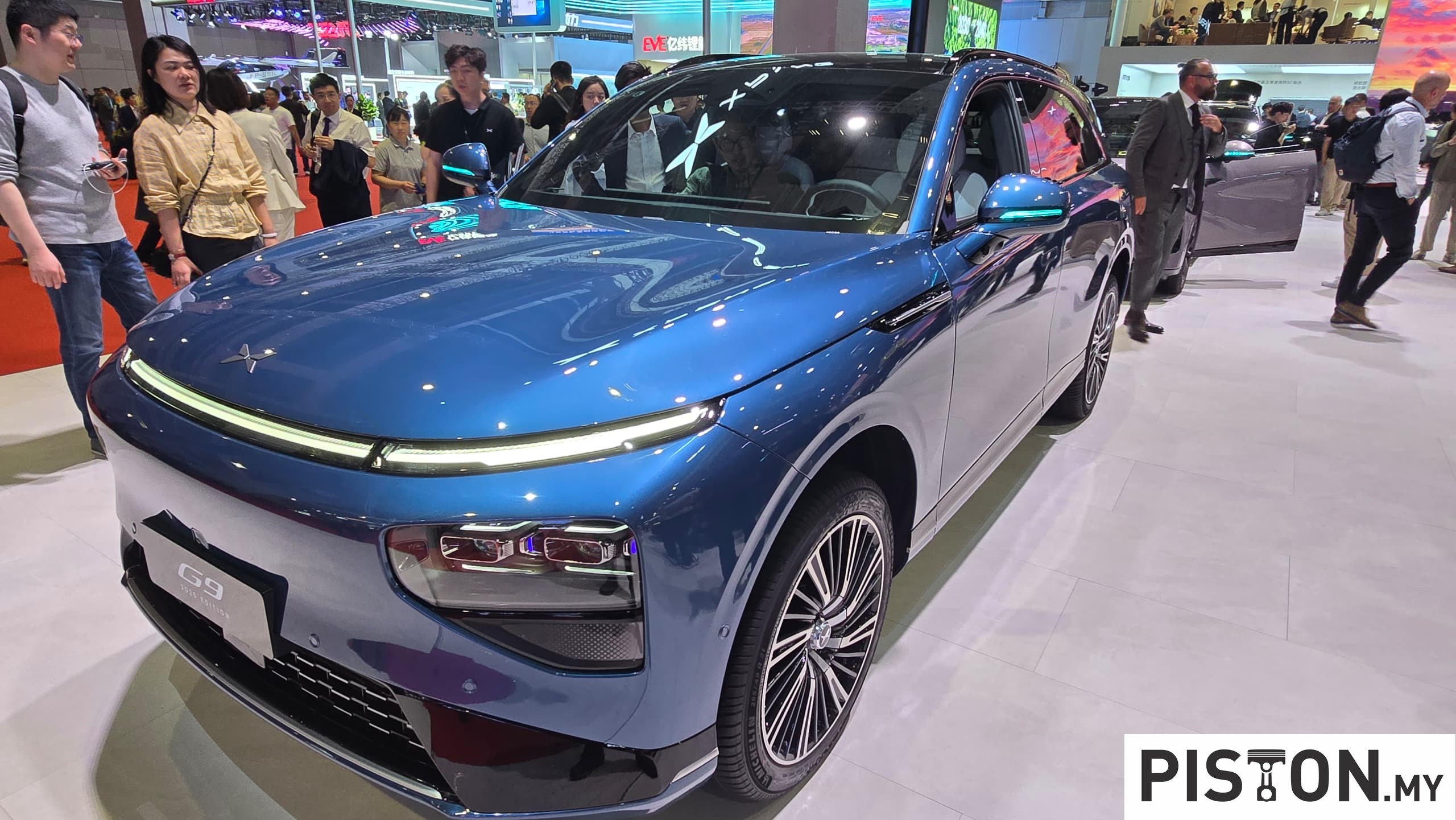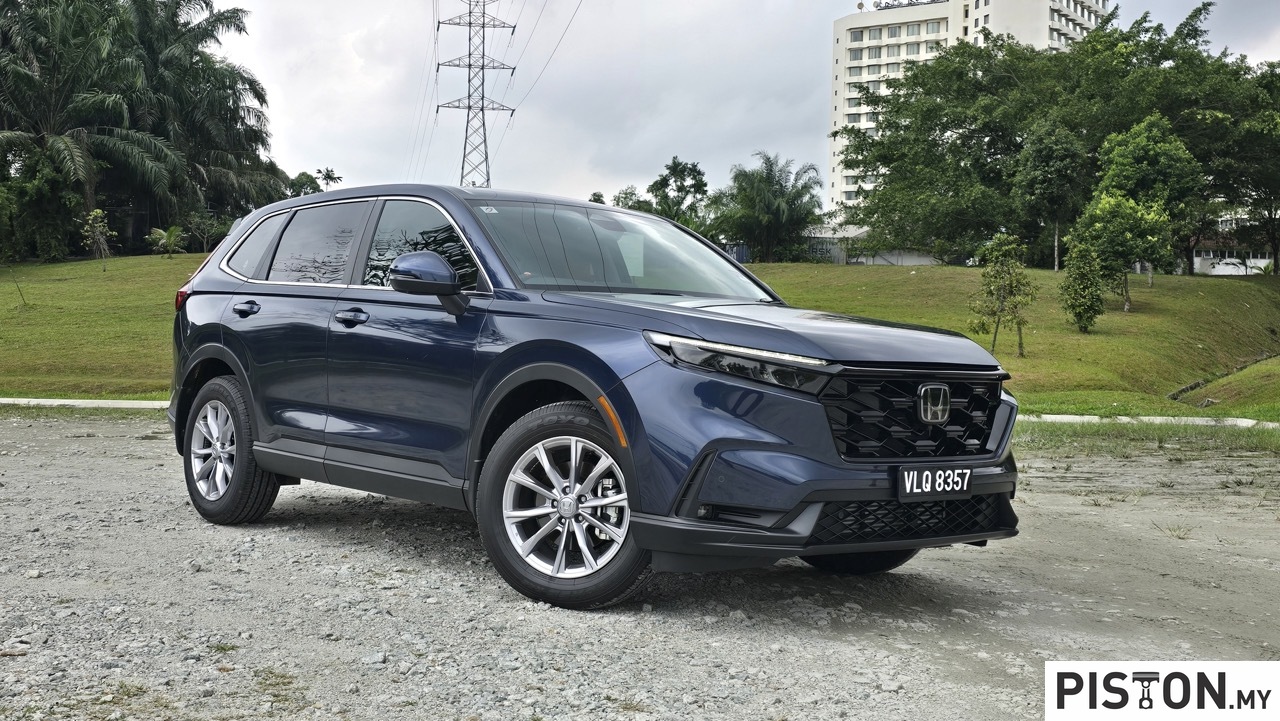Land Rover has unveiled the third bodystyle for the Defender, which gets the designation of ‘130’ to signify it as the longest version. While riding on the same wheelbase as the Defender 110 (3022 mm), the overall length of the Defender 130 is extended by 340 mm to 5358 mm.
The additional length, which can be seen to be achieved by increasing the overhang, allows seating for up to 8 persons on 3 full-sized rows within the cabin. At this length, the Defender 130 is certainly longer than rivals, including the Mercedes-Benz GLS.
To maintain the distinctive rear design of the Defender, Land Rover engineers have crafted a subtle boat tail-style uplift that also maximises the all-terrain capability customers expect from a Defender, providing a departure angle of 28.5 degrees. The surrounds for the rear LED lighting units have been re-engineered to maintain the 3 distinct lines that define Defender’s side profile as they rise subtly towards the rear.
The interior design features new colour and material options, with the latest connected technologies including a new, larger 11.4-inch Pivi Pro touchscreen. This gives enhanced control over the vehicle’s core functions via a crisp and intuitive display. The curved glass interface provides fast, state-of-the-art functionality and is responsive as soon as the vehicle is started, with a simple menu structure. Software Over-The-Air capability allows the owner to get updates anywhere in the world (at least anywhere where there’s a connection to the internet).
Interior air quality is an important consideration these days and Land Rover provides Cabin Air Purification Plus, which makes its Defender debut in the new 130 model. It combines nanoe X technology for allergen reduction and pathogen removal to help significantly reduce odours and viruses. In addition, CO2 management and PM2.5 filtration improve the cabin environment to give best available air quality. Additionally, a Purge function allows the driver to cleanse the cabin air prior to departure remotely using a smartphone.
The same large windows are present as well as the panoramic glass sunroof and with the increased length of the Defender 130, a second sunroof is also added over the rear occupants.
A new material finish – Natural Light Oak engineered wood veneer – is inspired by driftwood and lends a natural, modern look and feel, available to elegantly complement the Light Oyster Perforated Windsor Leather seating.
Access to the cargo area is unchanged, while a body-colour hardshell cover for the spare wheel is available. From the tailgate, the Defender’s Electronic Air Suspension can be operated with buttons inside the load area to make loading items easier.
The spacious and practical load area can contain up to 3,893 litres of cargo even with the rearmost seats in place. When the seats are not in use, they stow to create a large loading area, extending the floor length. Various configurations are possible to allow for more passengers or cargo.
The Defender 130 is available with a range of electrified powertrains, including the P300 and P400 mild-hybrid Ingenium 6-cylinder petrols, and the D250 and D300 Ingenium 6-cylinder diesels. The Mild-Hybrid Electric Vehicle (MHEV) technology uses a 48V Belt-integrated Starter Generator that harvests energy normally lost under braking and deceleration. This energy is stored and utilised later in the journey, while also making the stop-start system more rapid and efficient.
As with the other models, the Defender 130 has Land Rover’s Intelligent All-Wheel Drive (iAWD) system and 8-speed ZF automatic transmission as standard. The iAWD technology efficiently and effectively manages the powertrain and power distribution between the front and rear axles, optimising on-road efficiency and all-terrain capability as necessary.
Also standard are Electronic Air Suspension with Adaptive Dynamics and Land Rover’s advanced Terrain Response system for all-terrain capability. The latter provides the driver with intelligent management of the various active systems for optimum progress over all types of surfaces.
The air suspension can provide an extra 71.5 mm of lift at the front and 73.5 mm at the rear to clear obstacles on very uneven or rough ground. As for crossing water, the Defender 130 can safely cross a river that is up to 900 mm deep.
While availability depends on what importers order, the Defender 130 has its own colour palette, with a new, exclusive Sedona Red option. The exterior is complemented by the Extended Bright Pack – available in addition to the existing Bright Pack – which provides a distinct exterior design with Ceres Silver Satin finish around all lower body cladding and front and rear skidplates in Noble Chrome.
For more information and to find the location of the closest Land Rover showroom to you, visit www.landrover.com.my.




